|
Did you know there was a mini babywearing boom is Australia and New Zealand in the 1940’s? World War II caused a materials shortage and pram production fell by more than half. There was also a temporary lack of available home delivery services, so mums didn’t have the option to just stay home. Several styles were invented by enterprising parents including metal framed baby carriers but hip carriers were was the most popular. While these were not as popular as baby carriers are today these designs were successful enough to be sold in department stores and were later exported overseas including to the United Kingdom and the United States. The United States and the UK also seem to be have been affected by pram and also gasoline shortages to some degree (meaning more mothers had to take public transport). You can read more about these carriers in my previous post Mid Century Baby Carriers and Vintage Baby Carrier Advertisements. I have come across some more interesting photos (or learnt some more information about some photos I shared before) since I wrote that article so here's an update. Several are copies of press photos of the time. Captions were were written on the back of the photos although I'm not sure which newspaper they were published in originally. 1940s Baby CarriersAusssie Mama And Son Model ''Cuddle Seat". Mrs. June Liabo of Chicago, an Australian war bride, and her son Paul, nine months, introduces a new technique in baby carrying in Chicago. A cloth sling, called a "cuddle seat"in Australia, goes over the mother's shoulder to facillitate carrying a youngster. Mrs. Liabo is the wife of a former Marine captain and has been in the United States for 18 months (Acme Newspictures 3/26/46) Like A Papoose, Only Different. Ingenious idea from Australia that has been welcomed in America is the "Cuddleseat" a nifty contraption that allows a mother the freedom of both hands, and at the same time, supports her baby comfortably at her hip. So popular was the idea among busy housewives engaged in war work in Australia that one Aussie women brought marketing rights with her when she came to America with her Yank husband. She is Mrs John McHose, who demonstrates the Cuddleseat with her son Terry. (Acme Newspictures San Francisco 1/18/46) -This photo is dated February 3 1943. Shortage of baby carriages doesn't seem to bother Mrs. Jacobs Karro of Arlingto, Va.,who hit on this novel method of transporting 10-month-old baby David. Carrying baby on back papoose style, she's shown boarding a streetcar in washington. (Acme Newspapers Washington Bureau). It was also published in another newspaper with a similar caption. This mum is also using a cradle board to carry her baby (photo taken on 18 March 1945). Two of these photos were on ebay but with different captions (perhaps from two different newspapers) 50s-70s BabywearingHere are some intersting photos I have found covering this era. DIY baby carrier from a 1966 newspaper article, pictured with actress Lois Lawson. This ‘sling child-carrier’ was available through mail order for 50 cents through U-Bild. The pattern claimed to solve a ‘weighty problem for young mothers’ and was recommended to be made from double reinforced canvas or denim with the seat reinforced with masonite. Danish mother carrying her baby on her back in a metal framed seat in 1953. Mothers have always found ingenious ways to carry their babies. Metal straps though – ouch! I have come across quite a few photos of this kind of carrier and they look strikingly similar to car seats of the era so I suspect that is exactly what they are. The caption of the press photo explains – "Papoose Caboose - Copenhagen: In a modern version of an old American Indian fashion, the mother carriers her 'papoose' in a seat strapped to her back. Troublesome prams, which are always in the way in stores and subways, are unnecessary when the housewife shoulders her baby burden this way' Credit (United Press Photo) 11/25/53 Complimentary baby carriers were provided by Tesco in 1970s, so mothers wouldn't have to leave their babies unattended. "A Tesco spokesman said that the bid to best baby snatchers would cost £8000. Housewives Shirley Veritu and Christine Probert tried out the sling in a North London branch on Thursday (14-2-74) and found just one snag. They couldn't see what the little rascals were getting up to behind their backs." This initiative doesn't seem to have taken off, though. Do you like this idea? Photo: Trinity Mirror, February 1974 Early 1900sThese photos are from a much earlier eara when traditional babywearing was more common. This photo depicts two traveler women selling their wares while baby wearing (New Forest 1910) These next two photo show babywearing using traditional carriers in New Zealand from around the same era. Babywearing in Ohinemutu in New Zealand, 1908. I don't have a source for the second image which is possibly a postcard. So cozy! This photo of an Inuit mother and child was taken on King Island Alaska between 1915 and 1925. Two Washoe mothers carrying cradleboards on their backs ca. 1900. Image source: University of Southern California Libraries.
0 Comments
Linen (flax) is one of the most sustainable fibres that can be used for ring slings. Flax requires minimal water and pesticides and will grow in poor quality soils. Between the textile and food industries every part of the plant is used with nothing going to waste. Linen can be both lightweight and strong, and is great at absorbing moisture without holding bacteria, so is perfect for summer babywearing. The moisture wicking properties of linen will help you and baby to feel cooler on hot day. Linen softens up beautifully with use. Linen colours pictured - graphite, nimbus, ice mint, natural and truffle. How To Wash And Break In Your Linen Ring SlingDo not use fabric softener or bleach products - or detergents which include them. Also avoid detergent with optical brighteners.
Unthread the ring sling for washing. You can slip a sock around the rings so they do not knock about in the washing machine. Wash on delicate cycle on cold with a liquid detergent. Hang dry and iron while still slightly damp, this is the easiest way to minimize wrinkles in your ring sling (although linen will always have a tendancy to wrinkle, I think this just adds to the beauty of this verstatile fabric) A linen ring slings will naturally get softer as you wash and wear it buy to hurry it along you can steam iron, tumble in the dryer with tennis balls on air dry, run it back and forth through the rings, or sleep with it for a few days, leave it in a hot car, or sit on it. You can also braid your ring sling (but don't store long term like this to avoid permacreasing your linen). Baby carriers were not commonly used in Western countries throughout most of the 20th Century. There was however a small and short lived revival of babywearing in the 1940's led by a shortage of new prams (caused by World War II). Quite a few brands of baby carriers suddenly appeared. The Cuddleseat invented in Australia (by a retired test pilot) was successful enough to export to the US and the UK. These small brands didn't last beyond the 1950's but left behind some interesting advertisements. The ads encourage mums to babywear for the same reasons they do today, although easier queueing is a benefit not often mentioned now. Using a baby carrier was the 'modern' and scientific way and as a nice bonus it would not wrinkle your dress. One ad pointed out that using a carrier was like having your own private car. The Cuddleseat claimed to carry your babies weight evenly and could be used up to 2 years. Using a baby carrier was seen as a great way to navigate public transport and for shopping, and left you with hands free to carry your parcels and handbag. The ads were proud to proud to point out that the carriers were light, strong, easily adjustable and washable, and of course stylish, with several colour options available. Cuddleseat advertisement November 1953 (The Nursey World - UK) 1950's 1947 1947 Cuddleseats were not the only baby carrier around although maybe the most popular judging by the number of ads compared to the other styles. There was also the Margaret Shaw carrier pictured below (previously named the Women's Weekly Carrier as it was fist available to buy through that magazine by mail order). There was also the Cuddle-Bye plus a few other similar carriers which I haven't been able to find newspaper ads for but you can read more about them in my article Mid Cenury Baby Carriers and Vintage Baby Carriers A hip seat style baby carrier (not sure it was ever comercially made).
Pix. Vol. 11 No. 17 (24 April 1943) It's world breastfeeding week! I didn't feed much in slings at home but I did often when I was out and about. How else would I finish my shopping or eat my lunch? Ring slings were my favourite for breastfeeding in as they are so quick and easy to adjust. Have you fed your baby in a sling or carrier? Tip: Wear a breastfeeding singlet/tank top under you t shirt and then you can pull up your shirt from the bottom. This is also really great for cooler weather. Remember to always return your baby to an upright position and adjust your carrier after you have finished feeding.
Below is a video showing how to breastfeed a newborn in a ring sling. https://www.youtube.com/watch?v=2RvgjJm0ruo A video with an older baby https://www.youtube.com/watch?v=UN8Eono1rlg&list=PL9hKPtJid7hSa2h_FVbkSPriC-20QvO2t&index=2 Some more tips and how to switch sides. https://www.youtube.com/watch?v=yLJLFQnUCGY I made a whale meh dai over 9 years ago. It was one of my favourites, made from a Didymos Eisblau which is a gorgeous cotton, wool and silk blend. Now that my youngest child is 10 it seemed a shame to have it lying around unused and why buy new fabric to make a bag when there is lovely fabric that could be repurposed? I made a bag for my sisters birthday a few years ago (it was the first bag I made) and she was very happy with it so I decided to make another for myself. The pattern I used is the Shine on Sling Bag by Little Moo Designs. The bag has a ring closure on the strap and a zipper pocket inside. This is the first time I have made a bag with wrap fabric and the fabric is quite thick so next time I think I'll change some of the interfacing as it made the seams quite bulky. I lined it in some dark blue starry fabric. I had to piece the feature pocket as there wasn't enough fabric in the hood to fit, but I quite like the effect. I also had to add some extra fabric for the other crossover front pocket as there wasn't quite enough fabric in the carrier. Overall I am quite pleased with it. It's sturdy and the shoulder strap is quite cushy so will be great for carrying my library books. I'm glad this carrier has a new lease of life (which is white I love about upcycling). This carrier has gone on lost of adventures with us including to Anakie fairy park and strawberry picking! And now it will accompany me on new adventures as a bag.
I came across a vintage baby carrier on ebay called the Maral which led me to discover an interesting bit of babywearing history. This carrier was patented in the 1969 in New Zealand and was part of a revival of interest in babywearing that occured in the late 1960's. Baby carriers were especially popular among Le Leche League members. Marilyn Campbell in 1969 ran Maral with her husband Alistair and also organised the first formal La Leche League meeting in upper Hutt. Diane Hildreth "Yes Maral. When I was with Parents Centre Upper Hutt we promoted them in our magazines. I had one for my son Iain when he was a baby. They were fantastic. You could wear them back and front, adjust the straps and they provided head support which others on the market did not. I could do the veges for tea, vacuum, do the washing, all while I had in safely close to me." (Facebook comment from You know you grew up in Upper Hutt, Zealand when you remember.........' on the 29/30 September 2017 Christine Oliver "All of my 4 babies were carried in a bright yellow one of these in the 1980s. I offered to sell them in Perth WA as I had so many queries about where to purchase but Marilyn was content to keep the business small and local." (Facebook comment Upper Hutt Heritage Facebook page on the 29/30 September Photo by Wilfred Revelle Jackson 1970 Photo by Revelle Jackson 1970 Maral baby carrier back and front view. A different baby carrier from the same era from the Upper Hutt City Library Heritage Collections. There is not much information about this one, possibly handmade. Lynne McLellan and bay Tascha. Photo by Revelle Jackson date unspecified. Some parents made their own carriers, the Le Leche League offered a pattern (printed in their magazine) https://dunedinbabywearinglibrary.files.wordpress.com/2012/09/may-tielllphoto.jpg Do you have any memories of the Maral baby carriers or of babywearing in the 1960's or 1970's in New Zealand? Sources:
https://dunedinbabywearinglibrary.wordpress.com/background This is a comprehensive article covering the history of babywearing in New Zealand. https://uhcl.recollect.co.nz/nodes/view/21615 https://uhcl.recollect.co.nz/nodes/view/2273?keywords=marilyn%20cambpell&type=all&highlights=WyJtYXJpbHluIiwiY2FtcGJlbGwiXQ==&lsk=0d1c146c0e7a22f218341709c97a0a8c https://uhcl.recollect.co.nz/nodes/view/9425?keywords=campbell%20baby%20carrier&highlights=eyIwIjoiY2FtcGJlbGwiLCIxIjoiYmFieSIsIjIiOiJjYXJyaWVyLiIsIjQiOiJjYXJyaWVycyIsIjEyIjoiY2FycmllciJ9&lsk=6a7a7743138d923d210d814d8a2f7f53 There are severeal carrier styles available. Which one is right for you? Meh DaiA meh dai has four long straps and a rectangular shaped body panel. This carrier style was inspired by traditional Chinese baby carriers. It is a very versatile carrier and can be worn on front, back, and even on your hip. A meh dai is is supportive for long periods of carrying. This carrier style will fit a fairly large age range so it's great if you have both a baby and a toddler. The relatively unstructured nature of the fabric panel means it is easy to modify through small adjustments. This carrier style is also great for sharing between different sized wearers. The shoulder straps can be tied in different ways to vary how weight is distrubuted on your shoulders and you can wear the waistband at your waist or at the top of your hip bones (where ever is most comfortable for you). You also can spread the shoulder straps over baby's bum for added support if desired. There are severeal different shoulder strap styles to choose from. Your can read about the different styles here. Most meh dais are reversible so you can potentially get two different looks in one. Meh dais have good airflow due to open the open sides so can be a good summer option. To adjust your meh dai for a perfect fit you can roll the botton to make the carrier shorter or make it narrower by cinching the botton with a ribbon. Built in adjustments (an optional extra) make this even more convenient. The sides of the panel cinch down with a drawstring and the waist is sewn in a channel making it easy to cinch. There is a velcro closure to make sure the panel stays in the right spot when fully extended and when not in use the velcro is covered by a piece of fleece so it won't pull on you carrier or clothing. The waistband is quilted which offers great support without being bulky. The waist can be be worn apron or non apron style (see this article for more information). Meh dai's do take a little longer to put on than a full buckle carrier but not by much. You will get very quick at putting your baby in with a bit of practice. Wraps vary in thickness so some wrap conversion meh dais can be somewhat bulky to carry around if the wrap it's made from is quite thick, but this is easily solved by bringing a bag if you have and up and down toddler, or you can tie the carrier up into a handy bundle with carry handle (see this article for instructions). Some people are concerned that long strap tails are at risk of getting dirty in muddy weather. However I found I could almost always find somewhere dry to tie the carrier on (and if not they are easy to wash). Alternatively there are clever solutions like tucking the tails into your pockets or braiding the staps to shorten them (or even partly pre tying your carrier). You can find some more tips here. A meh dai is easy to learn to use and while it's fun to explore fancy finishes with your straps you don't need to do this to enjoy your carrier. The basic carries are quick to tie and comfortable A small advantage of the meh dai over the half buckle that it is a little quicker and easier to roll the waist to shorten the carrier (with a half buckle you have to take the buckles off and rethread them to do this otherwise they will be upside down). Your can also tie your waist straps though the shoulder straps for a waist free high back carry. Half BuckleA half buckle is a hybrid baby carrier that combines the ease of a buckle carrier with the comfort and versatility of a wrap. It is the same basic design as the meh dai but with a buckle instead of a tie waist. A half buckle can be used in the same ways as a meh dai and feels very similar to wear. The advantages are that it is a bit quicker to take off (and you will never accidentally untie the waist straps instead of the shoulder straps!) and the buckle can help you tie the waist a bit more firmly, which is useful when you prefer your waistband to sit at a particular spot. It is also slightly less bulky without the long fabric waist straps. Full BuckleThe Hipababy full buckle is fairly unstructed and not bulky so feels similar to the comfort of a meh dai to wear. Full buckles are very easy to use, just pop baby in and go! A full buckle is the quickest carrier to put on so is great for an toddler who is up and down a lot. It aslo folds up small enough to be convenient to carry around in your bag just in case. Full buckles fit a fairly wide age range (especially with built in height and width adjustments added) although not quite as flexible in sizing as a meh dai/ half buckle. The waist can be be worn apron or non apron style (just remove the buckles and reverse them). Full buckles are reversible for two different looks but if you add fit adjusters to your shoulder straps that is no longer the case. Fit adjusters are a small length of webbing with a slider which cinches the shoulder straps shorter which can be quite useful when sharing between differen sized wearers. Reverse Half BuckleA reverse half buckle has buckled shoulder straps and a tie waist (or ring waist). Quick to put on and folds up fairly small so is a great carrier to have in your bag just in case. Also great if you don't like the feel of a buckled waistband but want the convenience of buckled shoulder straps. Some people like the look and comfort of spreading the wide waist strap over their stomach. Pictured below is a revese half buckle with ring waist. Narrow Blanket PodaegiThe poadegi is a traditional baby carrier used in Korea. The western version has a narrower blanket but can be used in a similar way. Similar carriers are also found across South East Asia (eg the nyia used by the Hmong or the bei bei from China). A podaegi has two long straps which are sewn horizontaly and a long blanket body panel. It is similar in use to a meh dai without the bottom straps and with the added advantage of being able to be used for torso carries. A podaegi is the most versatile of the carrier styles and one size truly does fit all. Where you tie the straps determines the height of the carrier so your baby will not grow out of the podaegi. You can wear this carrier as a torso carrier or use the straps for shoulder support. There are many ways to tie (you can use any carry that you would in a woven baby wrap as long as it is a carry where baby sits in the centre of the wrap). You can wear your little one on your front, back, or hip. Similar to a woven wrap you don't need a hood but you can add one if you prefer, or a headrest. Podaegis like meh dai's and half buckles are great for sharing between different sized wearers. There are only two straps to deal with so can be very quick to tie on. Fairly compact when folded so easy to carry around. Ring SlingA ring sling is a long piece of fabric, usually around 2m long with a pair of sling rings sewn in. It is based on traditional tied on shawls or lengths of fabric used as carriers all over the world (for example the rebozo found in Mexico). Ring slings are great for newborns and small babies as it is very easy to get a customised and snug fit. Ring slings are also great for sharing between different sized wearers. There is a small learning curve to get used to positioning baby and tightening the sling but soon it will feel like second nature. Most ring slings I make are wrap conversions but I also offer linen ring slings. Ring slings made of linen can help to keep your baby cool in summer. Linen is a very strong fibre so the fabric can be thinner than other fabrics typically used for ring slings, but will still hold your baby comfortably and safety. This makes them perfect for hot weather and their lighter weight makes them very easy to adjust for beginners. The only disadvantage is that if you have a heavy toddler you make prefer a thicker double layer linen sling or a wrap conversion for more cushiness on your shoulder. Alternatively using a heavy weight linen instead does make quite a cushy toddler sling but you then lose the advantages of being hot weather friendly somewhat (contact me if you would like that option) A wrap conversion is made from a woven baby wrap cut to length. If your wrap is a size 5 (4.2m) the wrap can be split into two ring slings (great for sharing with a friend). Since ring slings are a one shouldered carrier it can be a bit tiring to carrier heavy toddlers for long periods of time but they are great for situations where your toddler is up and down a lot. A ring sling allows your toddler to rest tired legs on a long walk, or get a little bit of connection before going off to play again. They are also great for a quick trip to the shops or for school drop offs and pick ups. I also really liked ring slings for picking my sleeping baby up from their car seat- since they are so quick to put on baby will often just snuggle in a continue their nap. A ring sling is the easiest carrier to have on hand for when you need it. It folds up small so is easy to just pop in bag. Handy for breastfeeding on the go and the tail can be used as a cover up or sun shade. Ring slings are great for nosy babies who aren't old enough for a back carry. A hip carry gives your baby or toddler a good view of the world but they are still able to snuggle in for a bit or rest or sleep if they need to. Wrap Conversions or Linen?Woven baby wraps make great ring slings and can be converted into any of the other styles of carriers I make. Woven baby wraps are specifically woven to carry babies so they have just the right amount of give to mold around your baby and are very strong and hardwearing. If your wrap is not long enough I can add in some extra fabric to make up the extra length (depending on your chosen carrier style). Further information about wrap conversions can be found here and if you would like to order your own wrap conversion or custom carrier visit my shop. What if you are interested in a wrap conversion but don't have a wrap? There are some alternatives to buying a brand new wrap to convert (although that can be a good option if you are love a specific colour or pattern). Used wraps are fine as long as they are in good condition. It is fairly easy to source a second hand wrap as you can often find a good deal on facebook groups or marketplace or on ebay. Another alternative is to use Colimacon & Cie. This is a woven fabric specially made for babywearing produced in France from organic cotton, and comes in a wide range of beautiful colours. I have a small selection in stock but can order in any of the colours. Some wrap companies also produce plain white wraps which can be dyed if prefered. Linen makes breathable and light carriers and is available in a huge range of colours. Linen is great for summer and packs up small and will also soften beautifully with with wear and washing. Australia 1951 What were the baby carrier options available in the 30's, 40's and 50's? It was far more common for babies babies to be transported in prams but some parents did carry their babies at least occasionally. The most commonly found options were repurposed car seats, homemade carriers and hip carriers. Of course traditional babywearing was still practised in some places too. This article mainly focuses on Australia and New Zealand but the United States and the UK had some similar trends. In the 1930's I couldn't find any advertisements or photos of commerically made carriers (although I did find one mention of them). There were several homemade patterns puplished in newspapers so that seems to be the most popular option (often suggested as handy for parents to take with them holidays). These carriers looked like little canvas seats with handles. This changed in the 1940's when a pram shortage (caused by supply disruptions and materials being redirected for the war effort) led to a mini babywearing boom. There were also less home delivery options available which made the war years difficult for mums with small babies. In December 1941 there were 950 prams were manufactured in Victoria, Australia but by November 1942 the current production was down to 450 (more than half) and at the same time there was a steady increase in the birth rate. This caused some consternation about how to transport baby without a pram. One New Zealand newspaper (the Evening Post on 18 June 1942) suggested the government should sponsor a pram factory as the best option to solve this problem. Another article from Australia titled. 'Shortage of Prams: Papoose Frame Suggested' published in the Evening Post on 15th June 1942 was more in favour of babywearing. The matron of the Karitane Mothercraft Centre Sister M. Jacobs is quoted as saying 'It would be much less tiring for the mother if she carried the baby on her back instead of in her arms. From the baby's point of view, it is a much more natural way to be carried. Babies are more comfortable if they are in an upright position,' The matron also said 'We'll have to evolve some method of baby transport if prams become unprocureable. A mother came to see me recently with her baby in a canvas bag slung over her shoulder like a knapsack. A sling in front is another way of carrying the baby. Mothers like it better than the bag at the back, because they can watch what the baby is doing" https://paperspast.natlib.govt.nz/newspapers/EP19420615.2.111 Homemade Carriers Guides for making your own baby carrier existed from at least the 1930's. I found several similar articles describing a style of carrier that looks like a cloth seat. An article titled 'A Carrier for Baby' published in the Evening Post (New Zealand) on 25 May 1939 described how to make one - 'Nothing is more useful than a carrier for transporting a baby, either by car, bus, or train. In the shops carriers made of kid in pretty pastel colours are attractive but expensive' The article then adds advice for making your own inexpensive baby carrier at home 'You need pieces of deck chair canvas doubled (you can get it in charmingly coloured stripes nowadays) cut to the size you require. Stiffen them by slipping in pieces of plywood and sew them round a ply wood bottom, also cover on both sides with canvas. Fasten the double pieces of canvas together with large press studs, in order to hold the plywood in place, and make handles of cotton webbing. When the carrier is not in use the plywood sides may be taken out and the pieces put flat into a little case made of the canvas, so that it may be stored neatly and unobtrusively. https://paperspast.natlib.govt.nz/newspapers/EP19390525.2.188.6 This would be carried like a bag - in most photos caregivers are carrying the seat between them rather than using it to strap baby to their body. See this article on vintage baby carriers for some photos of this carrier in action. This style of baby carrier may have been inspired by early infant car seats (car seats were just starting to be commercially available in the 1930's and look quite similar). Below is an example of a pattern from 1935: It appeared in the "Ideas for the Home" column in the Western Mail Thu 24 Oct 1935 Page 35 A Baby Carrier. (Perth, WA). A more ergonomic handmade and quite modern looking baby carrier (from the United States) can be seen in this article from 1934 featured in the San Diego Union newspaper (December 24 1934) in an article titled 'Child Sees all in 'Rumble Seat' . George Hellickson made the carrier himself out of blue denim and flat cords and used it to carry his toddler daughter. "George Hellickson came to The Tribune-Union-Ryan party yesterday equipped for comfort. Hanging from his back in what he termed a homemade rumble seat was his 3-year-old daughter Helen. The 'seat provided a clear view of proceedings for Helen, assurance that she would not be injured and free use of Hellickson's hands with comfort for both ... He took the baby through the Chicago fair in it he said" 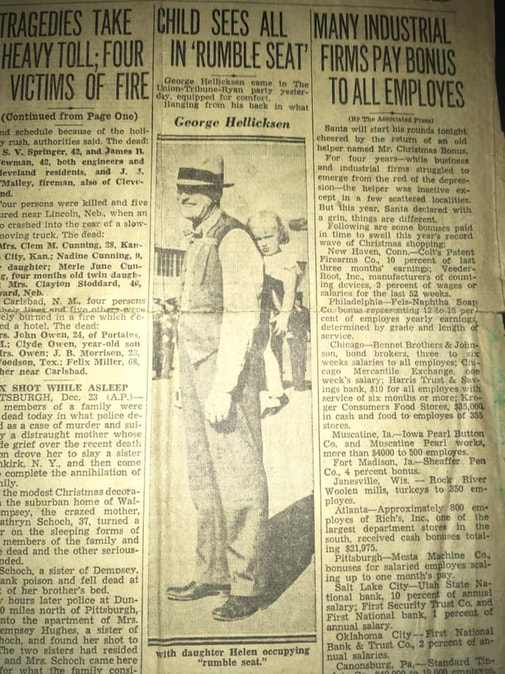 Convertible Car Seat CarriersCar seat for babies were available to parents from the 1930's and by the 1940's these were commonly a canvas seat with leg holes stretched over a metal frame with hooks. The hooks hung over the back of the bench-style car seat and kept the baby suspended above the seat, allowing a better view through the front windshield. Before this burlap sacks with a drawstring were used or whatever the parents could come up with at home to prop them up. Some mid century car seats handily doubled as baby carriers like the Hike-a-Pose pictured above. You could unhook the car seat and sling it over your shoulder to wear it as a back pack. This one looks like it may have some straps attached for this purpose hidden at the back. Most parents just seem to be slinging their babies just using the metal hooks that attach to the seat over their shoulder (it really doesn't look comfortable!). Car seats were certainly seen by some parents as muti purpose items and doubled as high chairs too. Man using car seat as baby carrier on the beach Bettmann c1960 Baby car seat doubling as a high chair. https://www.oddee.com/item_98981.aspx and pictured below a similar car seat/ carrier from the late 1940's (United States) I also came across this carrier from 1944 (from Australia). It's a similar shape but perhaps this one was created to be actually used as a baby carrier rather than a car seat. The straps certainly look softer. Mitchell Library, State Library of New South Wales and Courtesy ACP Magazines Ltd. Hip CarriersHip carriers seem to be the most popular of the carrier style available in the 1940s. Most photos I have come across from this era are of this style. There seems to be at least a few different brands, although except for the Cuddle-seat and Margaret Shaw, brand names aren't often mentioned in newspaper articles (although the Cuddle-Chair got a mention). Many of these styles of carriers were really carrying aides rather that true hands free carriers as one hand was often needed to support baby. April 1946: Mother carrying her baby in a sling next to a newly built shopping centre in New Zealand. (Photo by George Silk/The LIFE Picture Collection) The two most popular hip carriers available in Australia from the 1940's were the Cuddle-Seat and a carrier sponsored by the Australian Women's Weekly and available by mail order (later renamed the Margaret Shaw carrier and sold at David Jones). Margaret Shaw Carrier 'Mothers are finding The Australian Women's Weekly baby-carrier a wonderful boon. It fills a much-needed want because it carries the baby who hasn't reached the sitting-up stage. As the child lies in the carrier, only one arm is needed to support its weight, so mothers have a free hand to" lead a toddler or carry the inevitable parcel. The sling, which weighs only two ounces, is made in off-white material, with a plastic-lined base, and can also be obtained with blue, beige, or grey straps. The straps are adjustable to make the sling slide-proof. The baby-carrier, which costs 15/6, is obtainable at The Australian Women's Weekly Pattern Department, 168 Castlereagh Street. Add 3 d post age (or 6 d registered) for mail orders. The Daily Telegraph (Sydney) Sun 10 Aug 1947 Page 50 The Women's Weekly/Margaret Shaw carrier was designed by an Australia woman and cost $53.54 (when converted to today's money). Margaret Shaw was the the Matron of the Womens' Hospital Crown Street and was interviewed by the Australian Women's Weekly in July 1947. She explained that carrier was 'meant to help the mother in the early months, before baby can sit up and while he still needs support for his back. I have always felt sorry for the mother who has to carry a young babe and, at the same time, juggle with shopping bags and parcels. She feels that she may drop the babe, just as the babe, if he does not feel VERY SECURE, fears that he may be dropped'. A young baby could be wrapped in a shawl and put into the carrier. Only the seat of the carrier held the baby but it took some weight off and the mother only needed to support her babies' head and shoulders by cuddling baby in the crook of her elbow leaving her other hand free. 'This is what she finds a very great advantage. The young mothers to whom we demonstrated the carrier were delighted with it. One, Mrs- S. Butcher, mother of three-months-old Arthur Butcher, said:"It's wonderful. I don't notice the baby's weight at all." Mrs. T. J. Nilstrom, of Mascot,whose baby daughter Selma is seven weeks old, said:"Baby is happy in it." The Australian Women's Weekly Sat 19 Jul 1947 Page 40 The Cuddle-Seat The cuddle seat is another similar hip carrier invented in Austalia by William Hancock, a test pilot who had been forced to retire due to illness. He exprimented for six months before perfecting his design. The cuddle seat was marketed as being suitable for older babies and toddlers too unlike the Margaret Shaw carrier. The cuddle seat seems to be the more popular of the two (I found more references to it in newspapers and magazines and it was also later imported to the United States and the UK). A newspaper article entitled 'Novel Baby Carrier Eases Weight' from 1946 explains - the 'Cuddle-seat' has the recommendation of thousands of Australian mothers, who by practical experience know the advantage of this method ol carrying baby, especially in crowded areas and when shopping, Popularity achieved by the 'Cuddle-seat' with Australian mothers now extended to England and America, where it has been acclaimed as a definite boon. When carrierd in a 'Cuddle-seat' the baby is less weight on the mother and leaves her two hands free, Another very important feature is that the baby itself is carried In a natural position and is more comfortable. The 'Cuddle-seat' Is scientifically designed to carry babies of from four weeks to two years, It distributes the weight evenly, and balance is maintained' The Farmer and Settler (Sydney) Fri 1 Nov 1946 Page 13  .Other hip slings The Cuddle Chair was a very similar style to the Cuddle Seat and was sold in West Australia. 'PERTH babies are coming up in the world ! Many are now being carried around at mother's hip- height, by means of the new "cuddle chairs" now selling briskly at city chain stores. "Cuddle Chair' is a sling arrangement which passes round the carrier's neck and has a small padded seat at the loop near her hip, on which the baby sits. "Mostly young mothers buy them," a shop girl said yesterday. "I think it would be too much for the older ones to lump around." Another salesgirl, prettily slim, chimed in with: 'I'm darn sure I'd never use one!" Sunday Times (Perth) Sun 18 Mar 1945 Page 5 'CUDDLE CHAIRS' BOOM Photo from Sunday Times (Perth) Sun 2 Jan 1944 Page 1 Shopped With Baby In Cuddle Chair There was also yet another hip sling invented by an Australian mum (Myra Farrell) in the 1940's although I don't know if this particular one ever went into production or perhaps it was made into a DIY pattern. The carrier 'designed to help mother who must carry their babies on shopping tours in these days on no-deliveries' was featured in an article title 'Busy Mothers' Baby Carrier' in The Sun Tue 20 Apr 1943 Page 6 The hip carrier 'made from any stout material, allows the mother to have both hands free if needed. If the baby gets tired he can sleep comfortably in the carrier, and his mother need only use one hand to support him'. The carrier was described as beneficial for mothers too, improving their posture by 'preventing round shoulders'. The inventor of this particular hip sling was quite talented, as well as taking out a patent for the sling she also held patents for a rayless light which could be seen 700 miles away; a rife shell and machine gun shield; stitchless buttons, hooks and eyes, press studs; formulas for cure of tuberculosis, asthma, and catarrh; a skirt and pattern marker by which any style can be cut; and a preparation which prevents fly-blowing in sheep. Pix. Vol. 11 No. 17 (24 April 1943) pg 11-12 (photos of Myra's carrier are below. https://www.smithsonianmag.com/innovation/history-cribs-other-brilliant-bizarre-inventions-getting-babies-to-sleep-180972138/ The hip style carrier was also found in other countries too (although is does seem to have been more popular in Australia and New Zealand) . This baby carrier patent above is from the 1940's (United States). While this carrier was not a commercial success I love how the illustration shows how a baby carrier can help a mum go about her daily life by helping her with her shopping. Hip carriers seem to have faded in popularity after the war but I have found photos of parents wearing them into the 60's and it was popular enough for a major pattern company to produce a pattern for one in 1972 (McCalls 3357). Convertible CarriersThis ad for a convertible carrier looks like it's from the 1950's judging by the clothes but I haven't been able to find any details about it. If you have any information let me know! It may possibly an updated a version of the Carry-bye which looks quite similar. 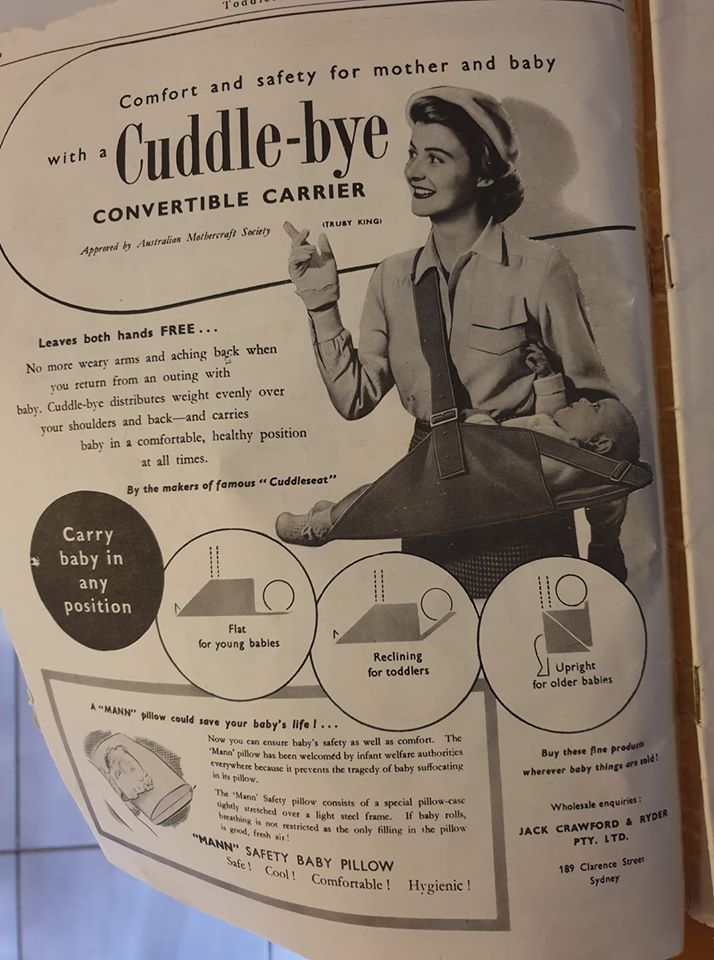 The Carry-Bye was invented in 1943 by Mrs A.C. Moores, while her husband was away at war so she could have her hands free for her other child and to carry her parcels. She spend many hours perfecting her design originally a folding canvas sling 'Mrs. Moores laughs when she thinks back to the clumsy contraption her first Carry-Bye was in comparison to the smart little job it now is, with' its nickel clips and adjustable buckles, its gay piped hood and its press-stud fasteners in colors to match the canvas."But," she will tell you, "I spent hours and hours on my first 'models' until I made one which was exactly right. I knew that no one, excepting a mother with a mother's difficulties, would take the trouble to find the very right thing they need, but this is it. Satisfied mothers have popularised my Carry-Bye, nobody else, because we have had no money for advertising." Her husband was injured during the war and could no longer farm so the couple focused on patenting and manufacturing the sling. It was succesful and was sold worldwide and was especially popular in England according to the article in the Women's Interests section of the The Land (Sydney) Fri 2 Apr 1948 Page 16 The carrier was available from at least 1947. Marketed as suitable from birth to two years The Carry-Bye weighed 15lb/6.8kg and was construction on a paper thin collapsible steel frame which enabled baby to carried in a reclining position or after six months sitting up. It came with a weather hood and a covering canvas sheet to shield the baby from wind and rain. Two adjustable straps meant that the weight of the baby was distributed to both shoulders and it also could be carried in the hand by a handle. Glen Innes Examiner Mon 27 Oct 1947 Page 4 NOVEL BABY CARRIER Above is a photo of Dubbo englineer G. H. Griffiths carrying his 13 week's-old daughter Julianne in a baby-carrier he bought while on holiday in Sydney. This carrier looks very similar to the Carry-Bye (although it's not named in the article) and like that carrier could also be attached to a tree limb and used in a swing or converted into a folding chair. The Sun (Sydney, NSW ) Sun 3 Apr1949 Page 1 HANDY BABY CARRIER Traditional Baby CarriersIn some places in this era mothers were still carrying their babies in this era as they always had. This Maori mother is carrying her baby in her feather cloak (1938). 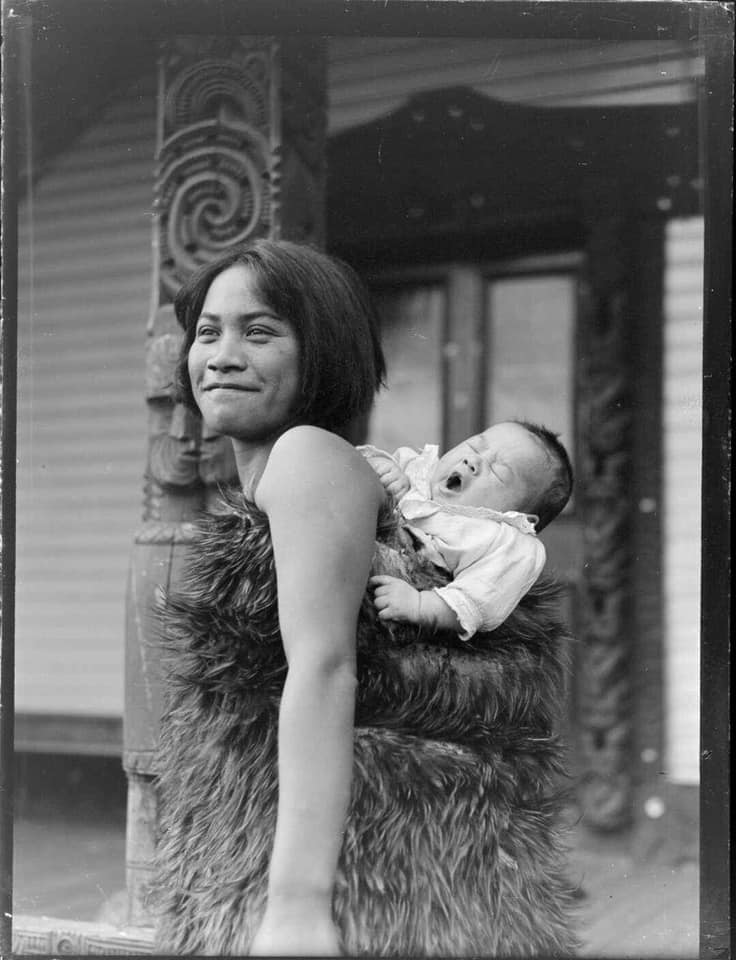 Maori woman carrying a young child on her back wrapped in a feather cloak. Whites Aviation Ltd: Photographs. Ref: WA-12537-G. Alexander Turnbull Library, Wellington, New Zealand. /records/22339012 Aboriginal Australian woman standing with a young girl and a carrying a baby in a coolamon (a multipurpose wooden container used to carry tools, food, and babies) at Yuendumu, Northern Territory, 1958. https://www.pinterest.com.au/pin/857513585287223398/ Traditional babywearing (using a large shawl) was also sometimes still found in parts of Wales, Ireland, and Scotland into the 1950's This new baby is being introduced to the neighbours. 1st March 1954, Wales. 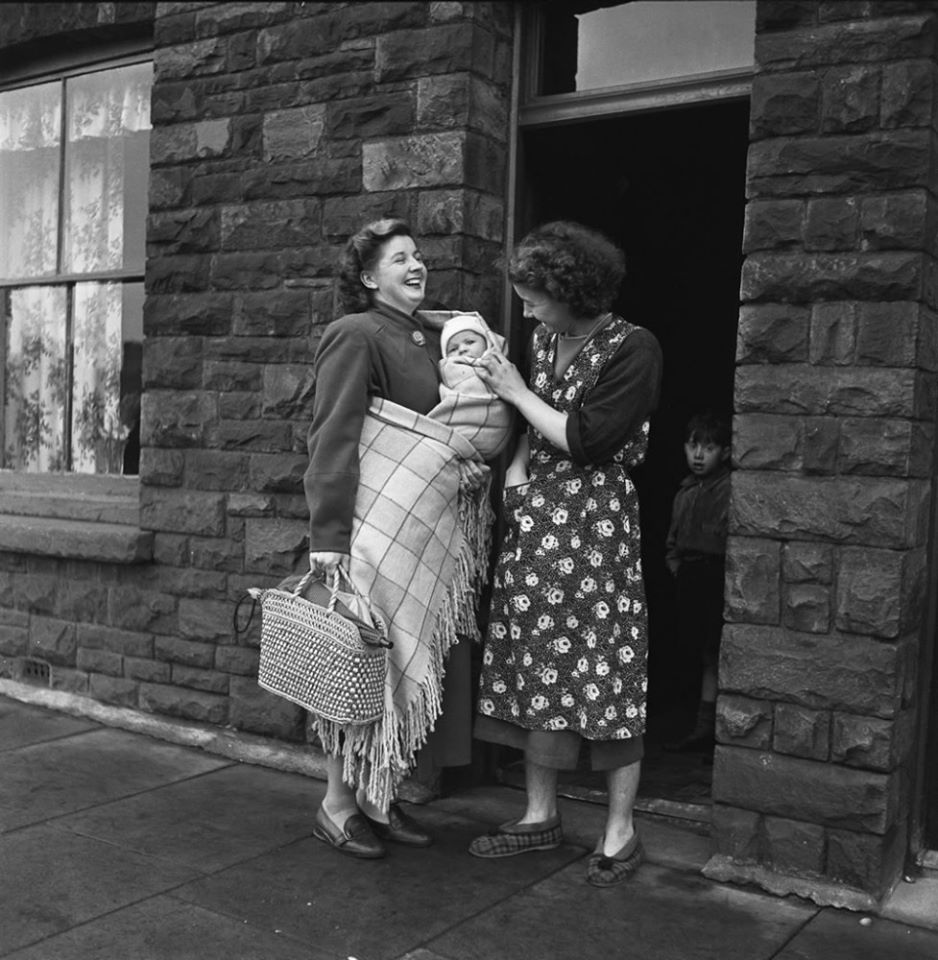 (Photo by George GreenwellDaily Mirror/Mirrorpix) A similar shawl carry from Ireland Attitudes to carrying babies and toddlers seem quite positive (with the exception of the Cuddle Chair sales girls quoted above) and the practicality of using a baby carrier seemed to be one of the main appeals. One Mum explains in her letter to the Mothercraft section of the Australian Women's Mirror (24 November 1948) 'Nurse While You Work' that her four month old son was recovering from a cold and wanted to be held all the time, but she also had other children who needed her She found the cuddle seat a good compromise. It allowed her to sort and put away the washing, set the table, do some tidying up and even sit down with her son in the carrier to do some darning "Small Son, happy to be snuggled up to me, would soon fall asleep, and I could then put him down again for a while" Another respondant to the Mothercraft collum reported admiringly about a mum she met in a train who had travelling with a baby sorted (The Australian Womens Mirror 8 February 1950). Her Cuddle-Seat was very convenient for travelling, and was combined with a hands free shoulder bag (matching her travelling costume of course) to hold her essentials. Baby was happy and it gave her some hand freedom to look after her other three children. It wasn't only mums who carried their babies, dads did too and this was mentioned in several articles and newspaper photos. In the article 'A Word From Father (Baby Clinic for Men) published in The Australian Women's Mirror on 15th May 1945 the author explains in a very honest way what life is like as a new dad. At one point his wife was so exhausted he took over looking after the baby for a few nights 'with the cosy-bye at my elbow'. His wife's health was deteriorating so much that he decided he should learn to change nappies too (his wife and mother and law were quite horrified at this so it must have been quite unusual). The family doctor advised he attend a baby care class for dads run by a local baby clinic for fathers whose wives were ill. He resisted going at first as he found it too public (he seemed pretty happy to help out with any baby care needed but didn't really want other dads to know about it!). Part of the clinic visit covered baby carriers (which is good evidence that their use was fairly commom in the 40's). 'Now I either have to carry the baby or wheel it in a pram, and if there is anything worse or sillier feeling than pushing a pram I have not met it. On the job the men talk about these new carrying seats the women have. Singapore slings, we Diggers call them, and all men without a baby think they are an affectation ... I felt pretty much the same way, but when Doreen got one and showed me how comfortable it was both to the baby and to herself I changed my opinion. The clinic gave us a lecture on slings one night, and they rate high with the clinics. Since then a couple of the men wear them to carry the baby in. The sergeant was the first to start. He said it was like a bit of his uniform, it was khaki, and it did not look so bad at that. I am tempted to say you will never see me in one, but looking back at the hurdles I have already jumped I am not game to be definite about anything. There is one thing I might point out about babies and their care, and that until some of the names are changed men will always feel sillier than they need. A cosy-bye, for instance. What man can ask about a cosy-bye and not feel silly? Then a cuddle-seat. A man, any man, might wear a Singapore sling but what man will admit to toting the baby in a cuddle-seat! The Australian woman's mirror.Vol. 21 No. 25 (15 May 1945) pages 5 and 17 https://nla.gov.au/nla.obj-507435521/view?sectionId=nla.obj-567210538&partId=nla.obj-507481716#page/n6/mode/1up Parents loved the cuddle seat and other styles for the same reasons parents enjoy babywearing today - the convenience, closeness, and the way it helps you get on with your day. There was interest in how people from other cultures carried their babies (I found one letter to a newspaper titled 'Cuddle-seats of Other Lands' and I came across a handful of similar articles and letters but there didn't seem to be much interest among Australian and New Zealand mothers in adapting and using traditional carriers. Although it could be possible that those carriers were used at least occasionally but just didn't get written about. Caregivers generally seemed to just use what they had available to them (backpacks/bags or car seats) or invented and constructed their own with varying degrees of success, some later becomming commercially available. Interest in babywearing seems to have waned after the 1950's (possibly because prams and other baby holding gear was easily obtainable again) but babywearing never completely dissapeared (after all you can't take baby hiking in a pram!). I have found a picture of Australian tourists using a Cuddle-Seat to tour Munich with ther baby in 1960. Framed backpacks and soft packs like the snugli started to be seen from the 1960's, as well as the Meh Tai, based on an asian style traditional carrier (sold be the Australian Nursing Mothers Association) also from the late 60's. Eventually there was another revival (from around the late 1990's and probably fueled by the easy sharing of information the internet made possible) which made baby carriers much more readily available in western countries and has continued to this day References https://www.mentalfloss.com/article/49280/brief-history-7-baby-basics
https://www.goodhousekeeping.com/life/parenting/g2870/car-seat-history/ Maryborough Chronicle, Wide Bay and Burnett Advertiser (Qld) Mon 30 Nov 1942 Page 2 CARRYING THE BABY https://trove.nla.gov.au/newspaper/article/151382435?searchTerm=baby%20carrying# Western Mail (Perth, WA : 1885 - 1954) Thu 8 Dec 1938 Page 34 A CARRIER FOR BABY: HANDY FOR HOLIDAYS. https://trove.nla.gov.au/newspaper/article/44789984?searchTerm=baby%20carrier# A CARRIER FOR BABYEVENING POST, VOLUME CXXVII, ISSUE 121, 25 MAY 1939 https://paperspast.natlib.govt.nz/newspapers/EP19390525.2.188.6?query=baby+carrier&snippet=true SHORTAGE OF PRAMSEVENING POST, VOLUME CXXXIII, ISSUE 139, 15 JUNE 1942 https://paperspast.natlib.govt.nz/newspapers/EP19420615.2.111 BABY'S OUTINGS EVENING POST, VOLUME CXXXIII, ISSUE 142, 18 JUNE 1942 https://paperspast.natlib.govt.nz/newspapers/EP19420618.2.22 The Daily Telegraph (Sydney, NSW : 1931 - 1954) Wed 29 Dec 1943 Page 5 SHOPS WITH BABY IN CUDDLE CHAIR https://trove.nla.gov.au/newspaper/article/247809500?searchTerm=baby%20carrying# https://www.facebook.com/historybabywearingireland/photos/rpp.141327056666106/141349509997194/?type=3&theater The Daily Telegraph (Sydney, NSW : 1931 - 1954) Wed 16 Jul 1947 Page 9 Baby-Carrying Problem Solved https://trove.nla.gov.au/newspaper/article/248395973?searchTerm=baby%20carrier Cuddle-seats of Other Lands (8 January 1947). (1947-01-08). In The Australian woman's mirror. 23 (7), https://trove.nla.gov.au/work/233204385?keyword=cuddle%20seat Newcastle Morning Herald and Miners' Advocate (NSW : 1876 - 1954) Thu 3 Aug 1944 Page 4 JOE INSPECTS "CUDDLE SEAT" https://trove.nla.gov.au/newspaper/article/134263850?searchTerm=cuddle%20seat The Australian Women's Weekly (1933 - 1982) Sat 19 Jul 1947 Page 9 NEW CARRIER FOR BABY... https://trove.nla.gov.au/newspaper/article/47226580?searchTerm=baby%20carrier The Daily Telegraph (Sydney, NSW : 1931 - 1954) Sun 10 Aug 1947 Page 50 New carrier for young babies https://trove.nla.gov.au/newspaper/article/248098508?searchTerm=baby%20carrier The Farmer and Settler (Sydney, NSW : 1906 - 1955) Fri 1 Nov 1946 Page 13 Novel Baby Carrier Eases Weight https://trove.nla.gov.au/newspaper/article/117337090?searchTerm=baby%20carrier The Sydney Morning Herald (NSW : 1842 - 1954) Tue 17 Jun 1947 Page 7 Death Of Inventor Of Cuddle-seat https://trove.nla.gov.au/newspaper/article/18030705?searchTerm=cuddle%20seat The Australian woman's mirror. Vol. 24 No. 53 (24 November 1948) https://nla.gov.au/nla.obj-486657879 The Australian woman's mirror.Vol. 26 No. 11 (8 February 1950)https://nla.gov.au/nla.obj-565425578/view?sectionId=nla.obj-567846693&partId=nla.obj-565442456#page/n31/mode/1up The Sun (Sydney, NSW : 1910 - 1954) Tue 20 Apr 1943 Page 6 Busy Mothers' Baby Carrier https://trove.nla.gov.au/newspaper/article/231750076?searchTerm=baby%20carrier# Sydney Woman's Inventions Baby Carrier Makes Shopping Easy PIX (24 April 1943) https://nla.gov.au/nla.obj-438628554/view?sectionId=nla.obj-477287868&partId=nla.obj-438694374#page/n11/mode/1up Glen Innes Examiner Mon 27 Oct 1947 Page 4 NOVEL BABY CARRIER https://trove.nla.gov.au/newspaper/article/184630326?searchTerm=baby%20carrier The Sun Sun 3 Apr 1949 Page 1 HANDY BABY CARRIER https://trove.nla.gov.au/newspaper/article/231070352?searchTerm=baby%20carrier#titleModal Newcastle Morning Herald and Miners' Advocate Thu 3 Aug 1944 Page 4 Joe Inspects 'Cuddle Seat' https://trove.nla.gov.au/newspaper/article/134263850?searchTerm=cuddle%20seat# Sunday Times (Perth) Sun 18 Mar 1945 Page 5 'CUDDLE CHAIRS' BOOM https://trove.nla.gov.au/newspaper/article/59331570?searchTerm=cuddle%20chair# Here are some tips for tightening your Combination (hybrid) or wrap style straps and keeping the straps from creeping towards your neck, as well as for removing any slack in your straps. Here is a photo tutorial and I've added a video too. This demonstration is of a front carry in a baby size half buckle using a demo doll. I am using a baby size adjustable half buckle with Combination straps. With a baby of this size make sure to remember to use the drawstring at the top of the body to adjust the height down so baby isn't lost down in the carrier and baby's face is visible. There are some more tips about how to use a carrier with a small baby here. Buckle (or tie) your carrier around your waist (you can place it apron style for a small baby as in this photo). Bring the body of the meh dai up while supporting baby with one hand. Toss the straps over your shoulders and cross them, then hold one strap between your knees (or with one hand) to keep it in place temporarily. Make sure the straps are on your shoulders not your neck. Pull one strap down to the floor than across (this helps to keep the straps from sitting too close to your neck) then bring to your front. Hold this strap between your knees to keep it tight. Pull the other strap down and around. The x shape made by the straps over your back should be low (which helps to keep the straps sitting correctly on your shoulders and not creeping in towards your neck). Pull down on both straps one at a time to make sure there is no more slack, then bring around to the front. Before tying off pull along the strap strand by strap to get any slack out then hold the strap between your knees and do the same for the other strap. Cross the straps under baby's bum and tie off in a square knot. Flip over the edge of the shoulder strap over if desired. For additional support you can also spread the straps over baby’s bum (not pictured). Video version - thanks to my 13 year old for helping me film my first video! 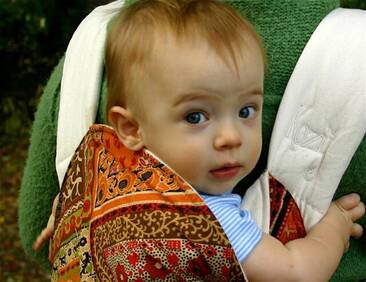 Modern meh dai's (also know as mei tais) are based on traditonal Chinese carriers. Meh dai is a popular modern spelling - but in the era I am convering mei tai or asian baby carrier (ABC), would have been the terms used. This article covers the history of the meh dai in the western world from the early 2000's until around 2006. Meh Dai’s really took off at this time and were a popular carrier style. Traditional Chinese Meh DaiThe traditional meh dai introduced to the western world was a simple square of fabric with four straps of equal length. Traditional Chinese baby carriers can be found in many variations as most minority groups have there own distinct style -some have only two straps for example, but these were not as well known. Traditional meh dai staps were genearally narrow and unpadded and the strap attatchment to the body was often horizontal. This is the style sold by the NMAA (Nursing Mothers Association Australia) in Australia since the 1960's. Mei Dai's were also occasionally sourced direct from China. In the US this traditional style was imported and sold on peppermint.com from the early 2000's one the first websites selling several styles of baby carrier. "The Mei Tai ("may tie") is a traditional Chinese baby carrier that ties on. Young babies are carried on the front. Older babies are carried on the back. The Mei Tai seems to work best until 20 lbs (Comfort-wise, that is. It is plenty safe for heavier weights.) Straps each measure 3.75 wide and 39" long. The bottom straps are tied around the waist, then the top straps are brought over the shoulders and tied to the waist strap. The design is flexible enough that one can come up with various ways to tie it on." https://web.archive.org/web/20050304212522/http://store.peppermint.com:80/mei-tai-baby-carrier.html Before the internet babywearing information would only have been available (rarely) in magazines, and through parenting groups like Le Leche Leauge (US) or The Nursing Mothers Association (Australia) or if you were lucky enough to have a friend or relative who knew how to use one and was willing to show you. In the early 2000's the growing popularity of the internet allowed information to be shared much more quickly and easily. This is a large part of the reason that meh dai's (and babywearing in general) become much more popular. The Babywearer the first popular internet forum devoted to babywearing launched in October 2003 and many other parenting forums had a section devoted to babywearing too. From the few meh dai's available to parents (almost unchanged from the tradional design) there was soon an explosion of online shops that were designing, sewing and selling meh dais with each vendor adding on their own twist. These modern carriers had a wide variety of new features such as head supports, sleeping hoods, pockets, long padded or wrap style straps, mesh panels for hot weather, and cinchable bodies for easier use with different aged babies. Of course many of these features were really reinventions as elements of these are also found on some traditional asian style baby carriers. For more information about traditional meh dai's see this article. Early US Made Meh dai'sThe Packababy and The Baby Back Tie Early small scale brands stayed fairly close to the traditional design with a few small differences. The Baby Back Tie and Packababy were both basic designs. Neither had any padding (though Packababy eventually made shoulder pads that would slide on) The website for the Baby Back-Tie was launced in December 2002 and the Packababy's in July 2003. The Kozy carrier arrived later in 2003. The Packababy had a large body and the Baby Back Tie (BBT) a smaller one. The Packababy and Baby Back Tie were made with heavier fabrics and longer straps (a departure from the lightweight fabrics and short straps traditional mei tai’s tended to have) but they still had narrow straps. Packababy (pictured to the right) had a unusal construction with wide cotton webbing straps crossed through the body and sewn to the outside. These carriers were made from sateen canvas with a layer of cotton on the main side. There's an interesting description of how the packababy was sewn here - https://web.archive.org/web/20040806201034/http://www.packababy.com/makingof.html The Baby Back-Tie had four long straps meant to be tied traditionaly (straps tied to form one single knot in the front) but it was also pictured on the Baby Back-Tie website as tied in the newer style with back pack style tied shoulder straps and the waist strap tied around the waist Baby Back Tie (Packababy pictured above) The Kozy 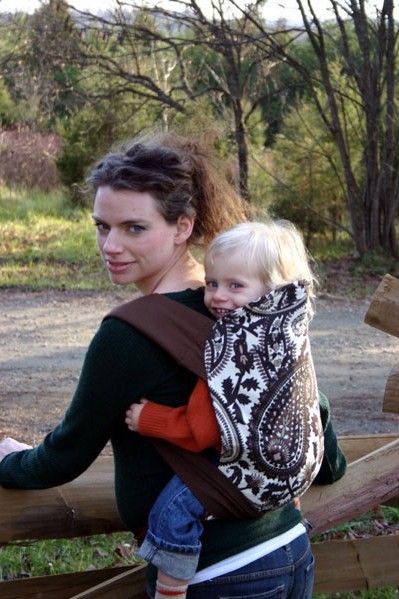 In the US the first really popular meh dai was the Kozy, designed by Kelley Mason in late 2002, after a picture she saw on the Internet and she also took some inspiration from the Packababy and Baby Back Tie. "The Kozy is a modern version of the Asian Mei Tai, and it was inspired by the carriers that proceeded it. I have added things to it to add in stabiIity and comfort but have been very cautious to keep the design true to the style...simple, compact, and comfy...I don't claim to have "invented" this carrier (hey, I am creative, not brilliant ;-) These types of Asian style carriers have been around for a long time. I simply added my own ideas to the more modern versions out there today with the hopes that perhaps I could offer you something a bit "different" that might not be offered in other "asian style" carriers. https://web.archive.org/web/20041123180331/http://www.geocities.com:80/kozycarrier/mystory.html The body of the Kozy was larger and taller than it's traditional counterparts, and the shoulder straps wider, longer, and padded (and with a pocket on the end). The waist straps were unpadded and angled. There was a curved top useful as a headrest, but no hood. The shoulder straps (like many early US mei tai’s) were not quite as long as those found on many meh dai’s today and were were designed to tied off under baby’s bum or across the back. For many years many of the mei tai’s made in the US after the Kozy came out were influenced by this design. The Kozy was the first really sought after meh dai with a long waiting list at first and reselling quickly when listed on FSOT (For Sale or Trade) boards in the forums. Unlike the other more basic mei tai's which came before it was available with designer prints and luxurious optional extras (Bling Kozies) with silk panels, panels with beads and embroidery, and velveteen straps. There is at least one instance of a panel Kozy selling for $400 USD, way above the original retail price of $125 USD. Design and ConstrucionBy the mid 2000's there were numerous small companies making and selling meh dai's (and often also ofering modern takes on other traditonal carriers too like podaegi's, hmongs, and onbuhimo). The Kozy carrier was followed by popular brands like Ellaroo (2004) Freehand (2004), Sachi , Babyhawk, Mei Tai Baby, Napsack, Angelpack, and Kolamo (later bought by Ellaroo). CuddleN Carry, Equanimity Baby Mei Tai, Freehand (2004), Cat Bird Baby (2005). There were also many small brands made by work at home mums which tended to come and go quite quickly although there are a small number which evoled into larger well know brands. These early brands added their own stamp to the traditional Chinese meh dai design. CuddleN Carry added a hood and wider straps, Sachi added leg padding. Babyhawk added a stiff and tall padded headrest and Happy Cruiser came up with a contoured body. Mei Tai Baby later added an adjustable base for their carrier with a drawstring and later with snaps (in 2005) and Catbird baby was working on a different adjustable system around the same time. These are all features still commonly found in many meh dai's today. Mei Tai Baby
|
AuthorI love to sew. I have five curious and active kids who keep me busy! Archives
May 2024
|

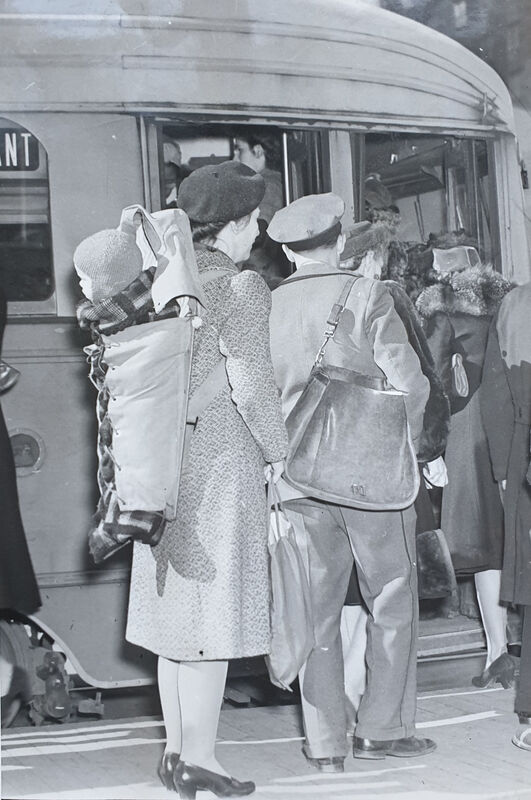
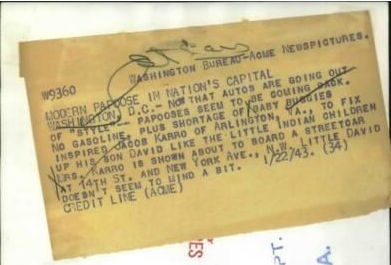


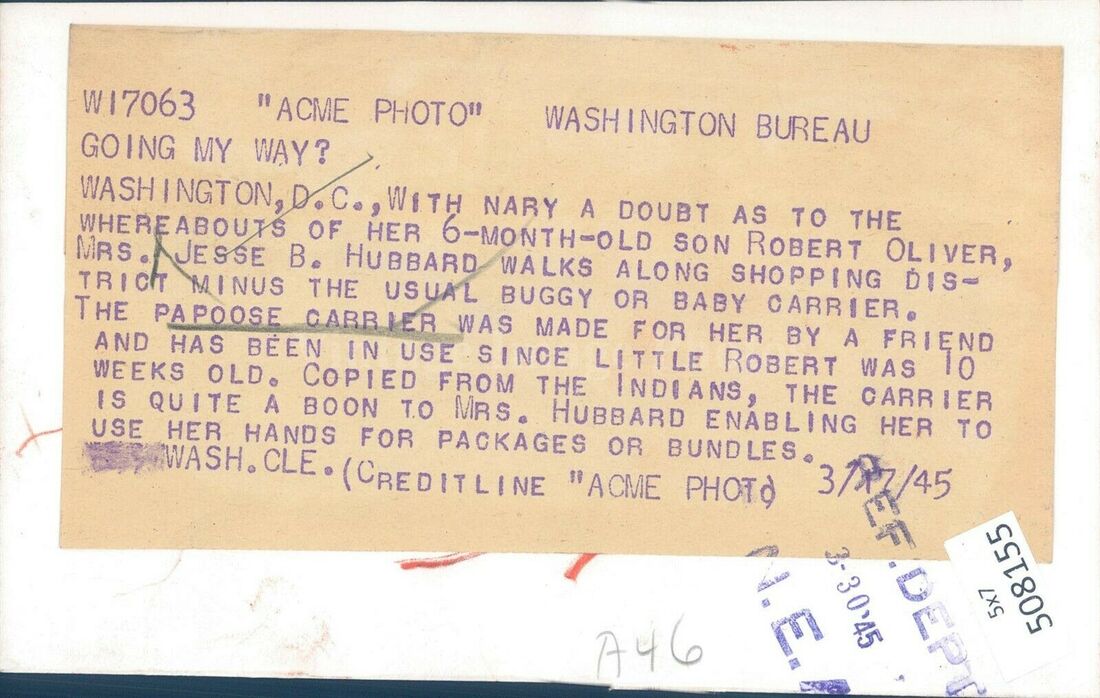
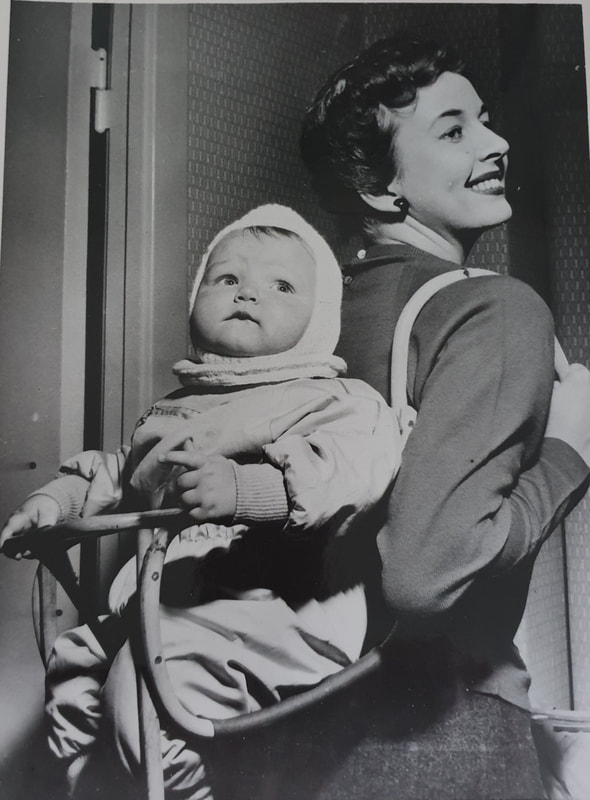
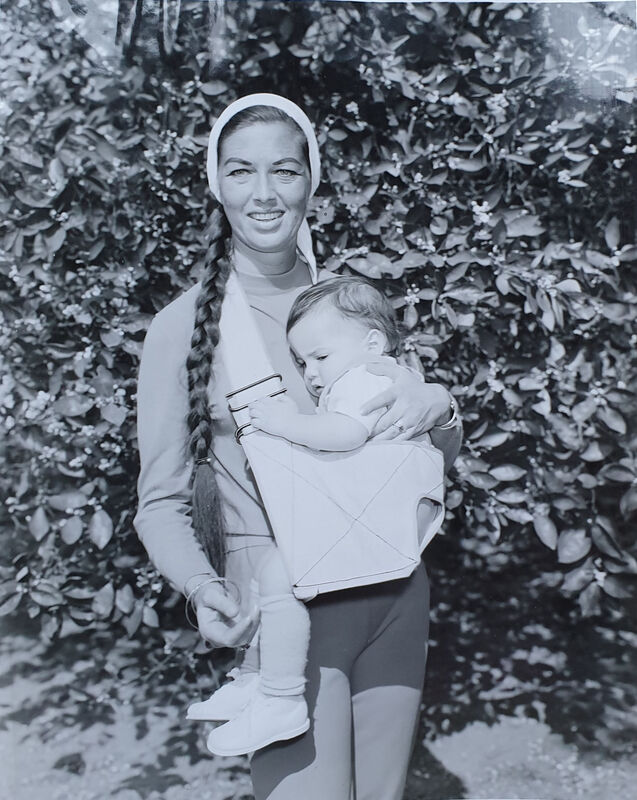
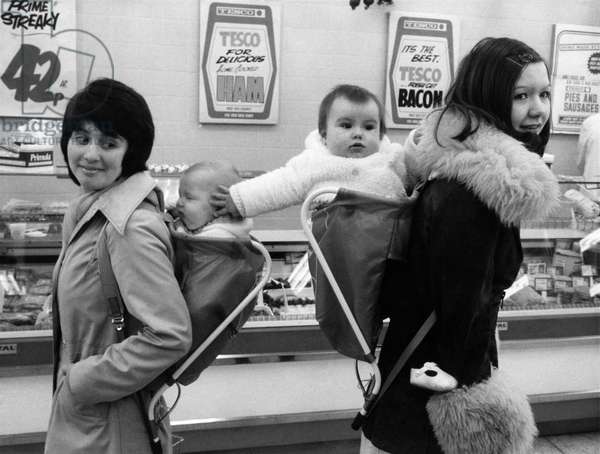
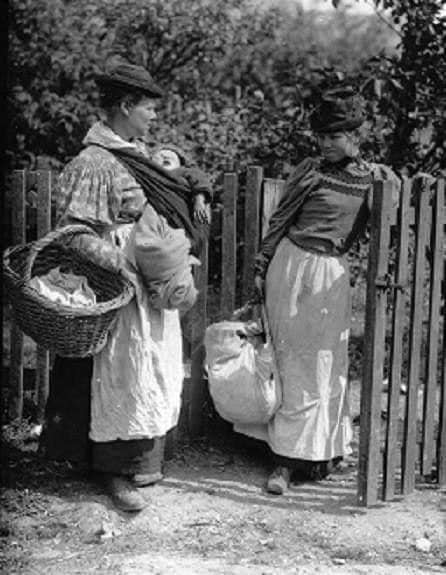
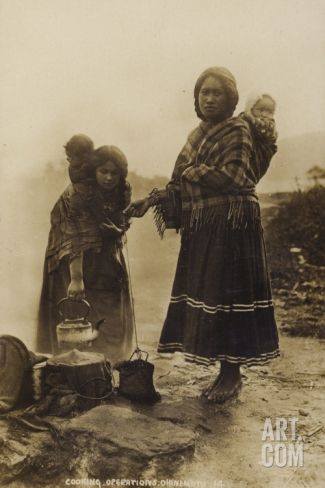
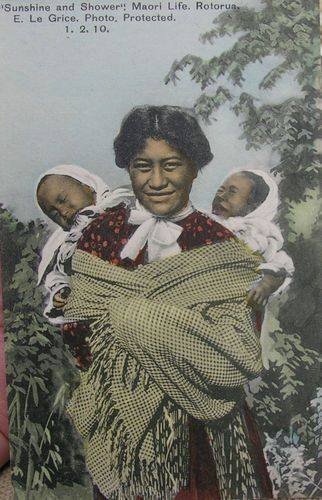
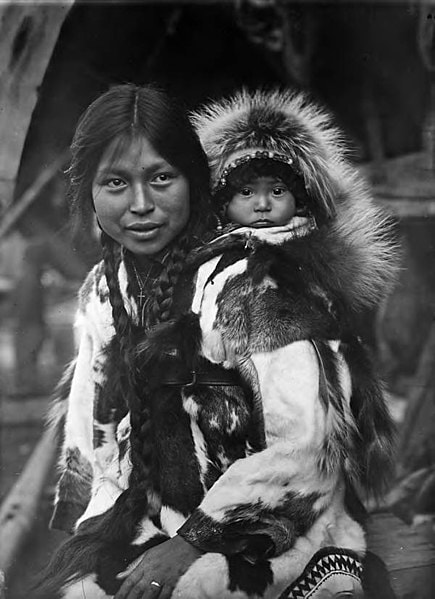

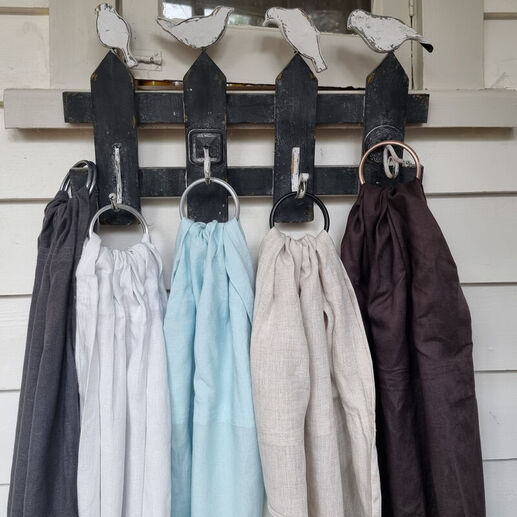
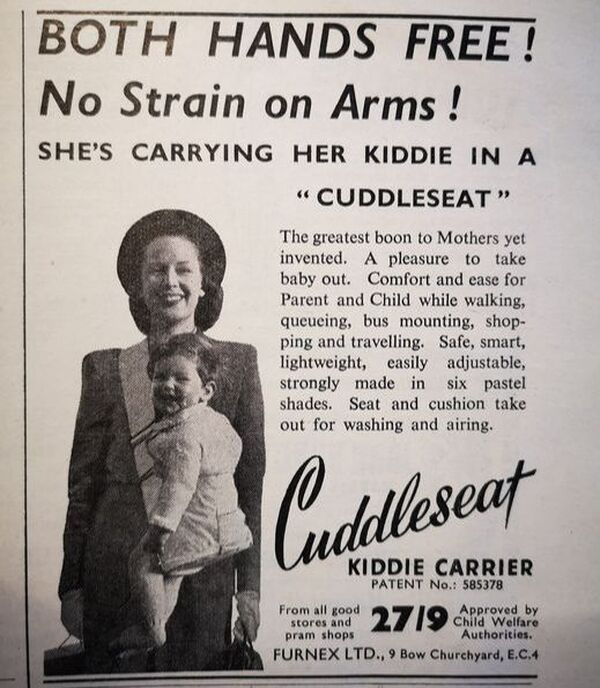
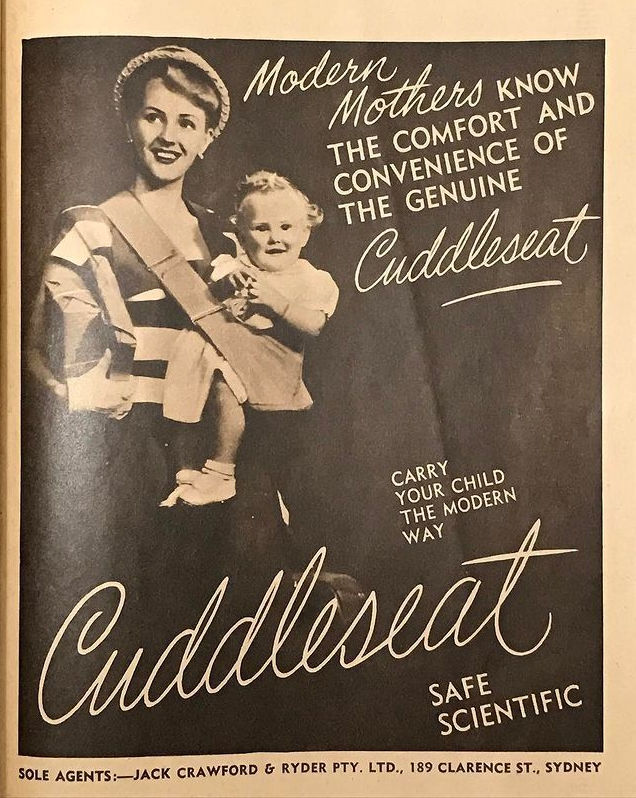
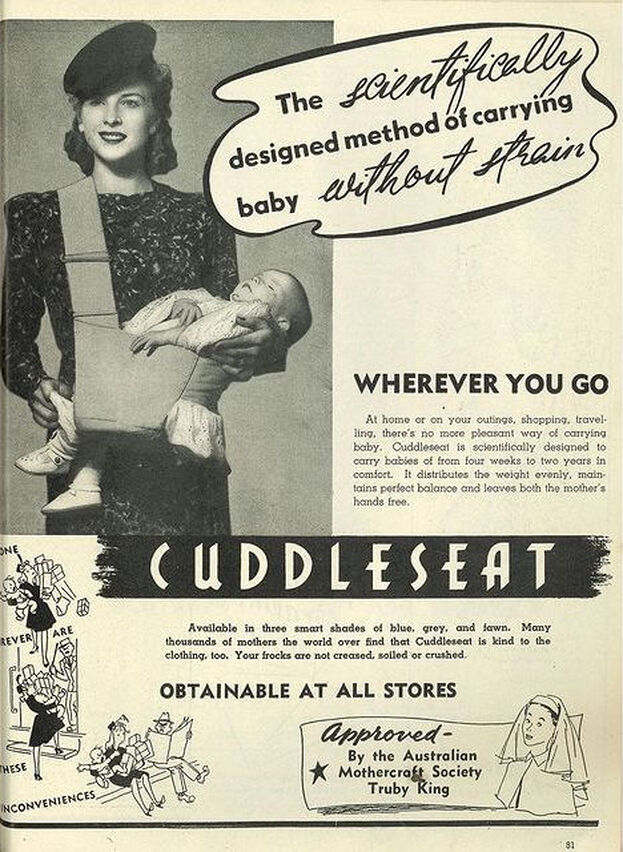
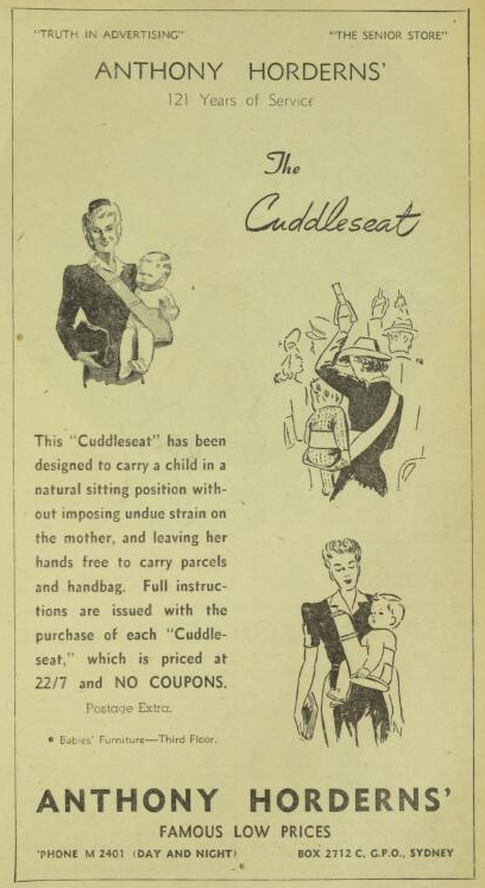
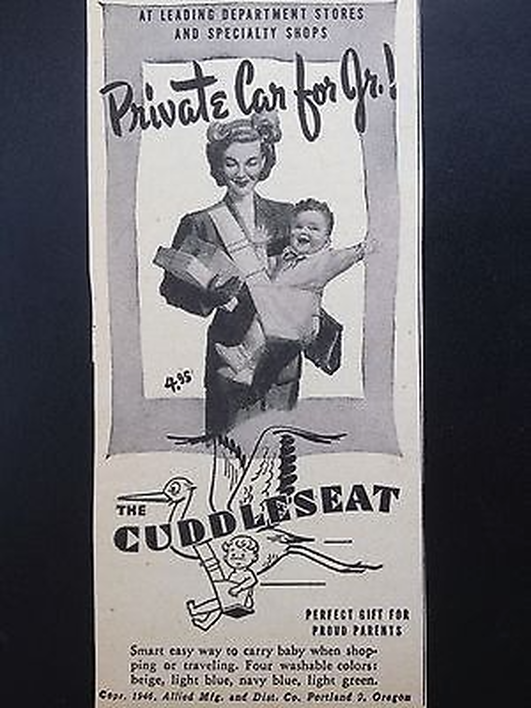
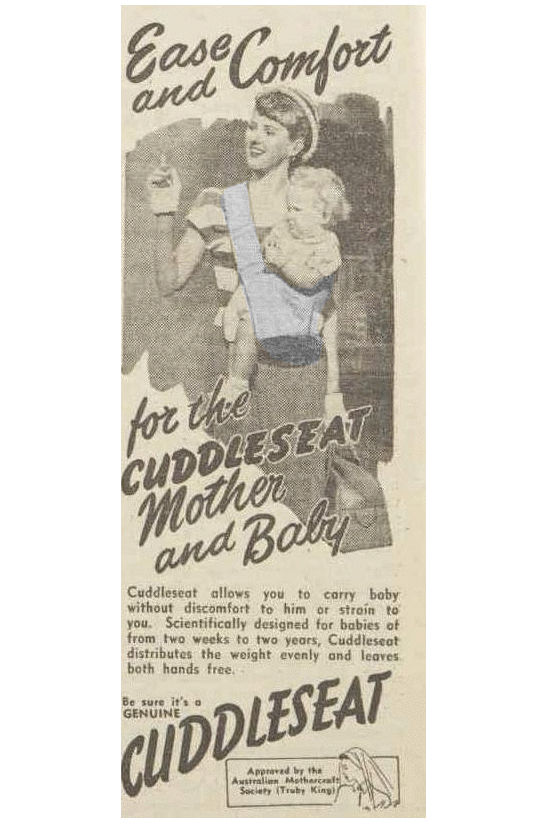

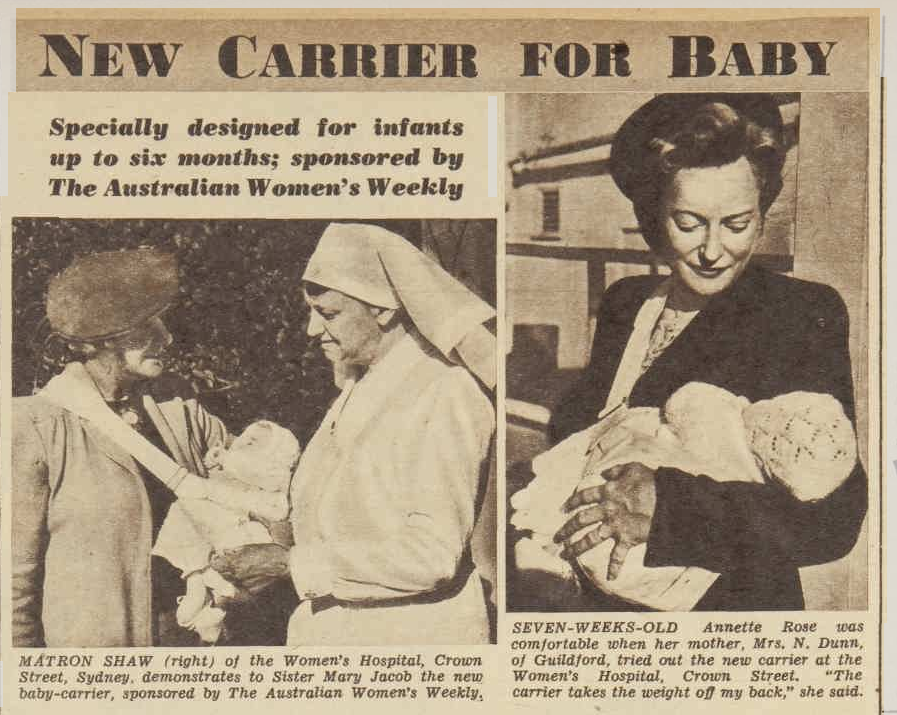
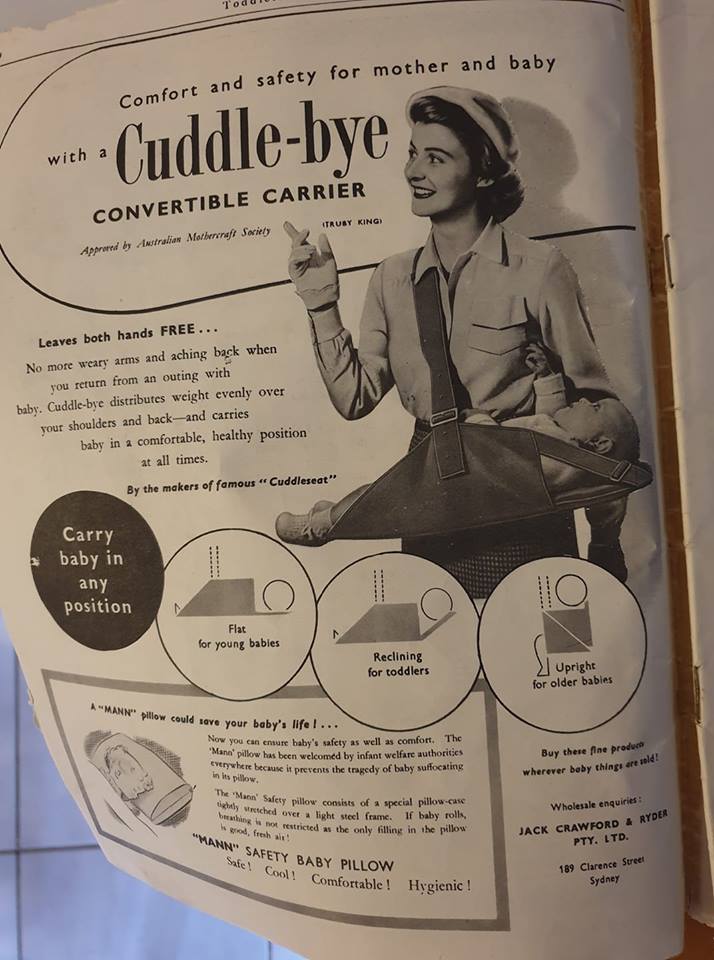
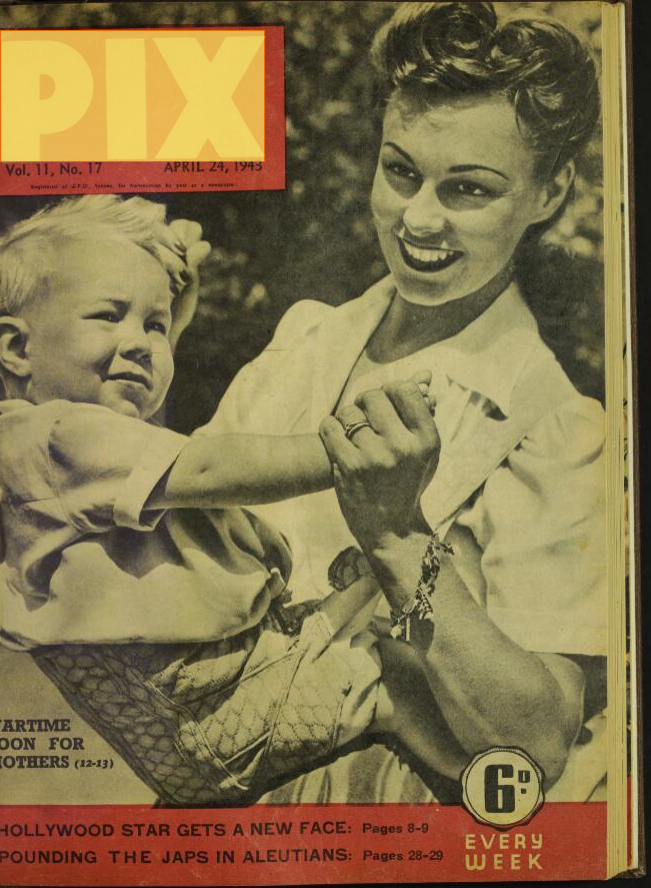
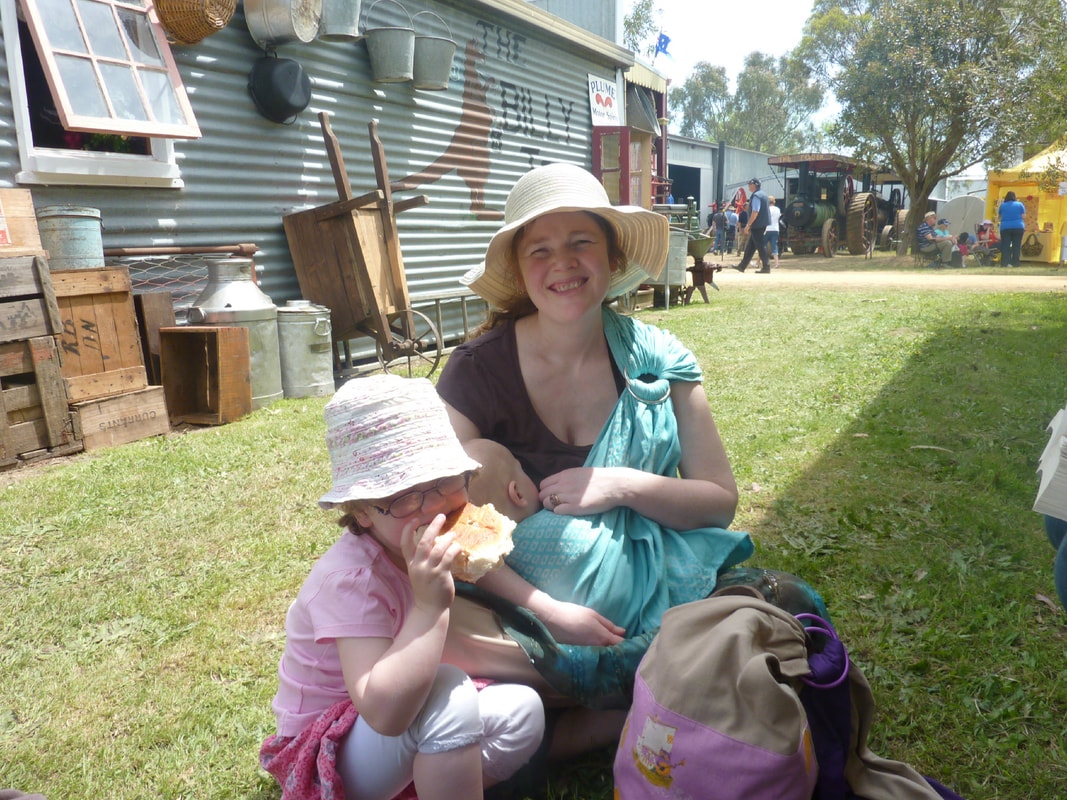
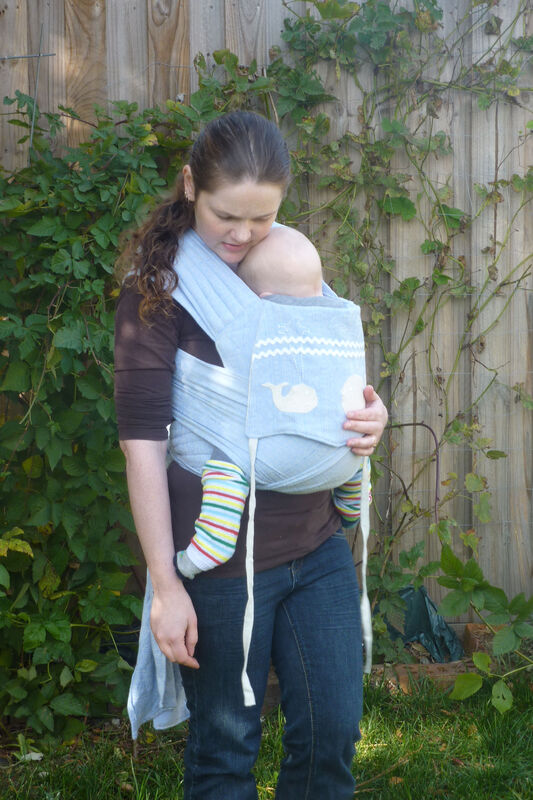
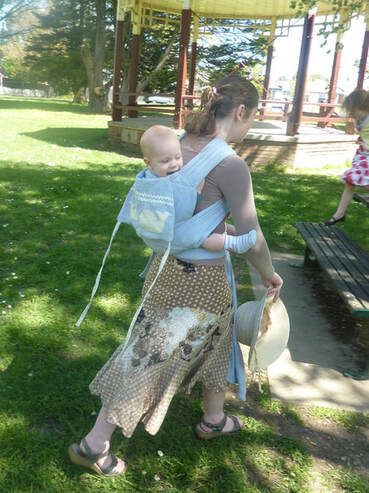
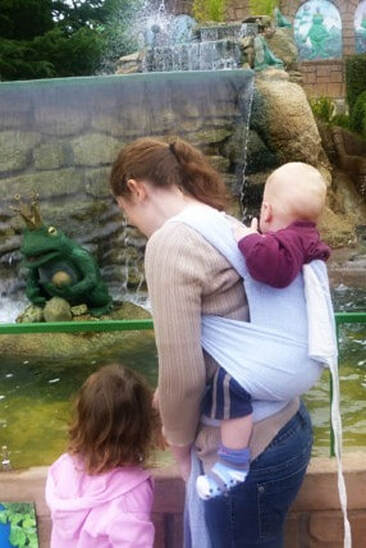
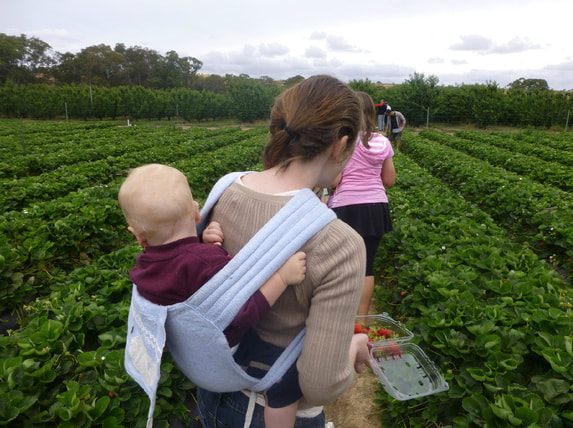
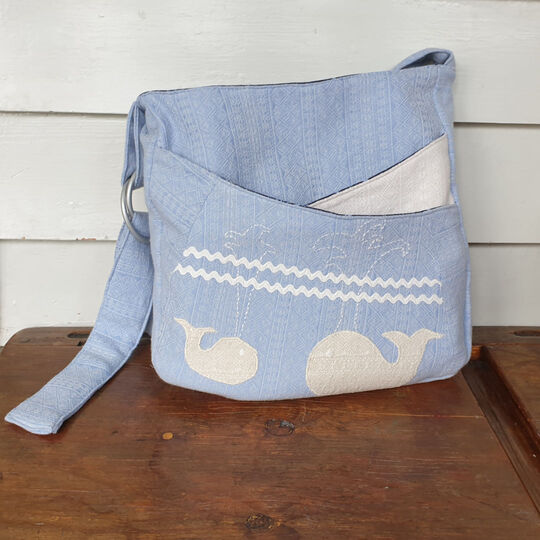
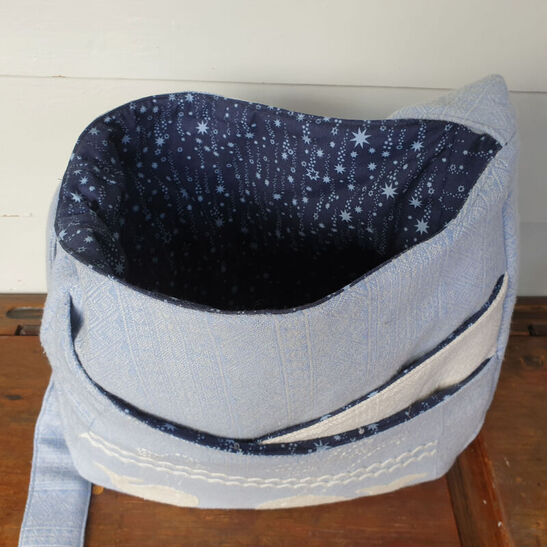
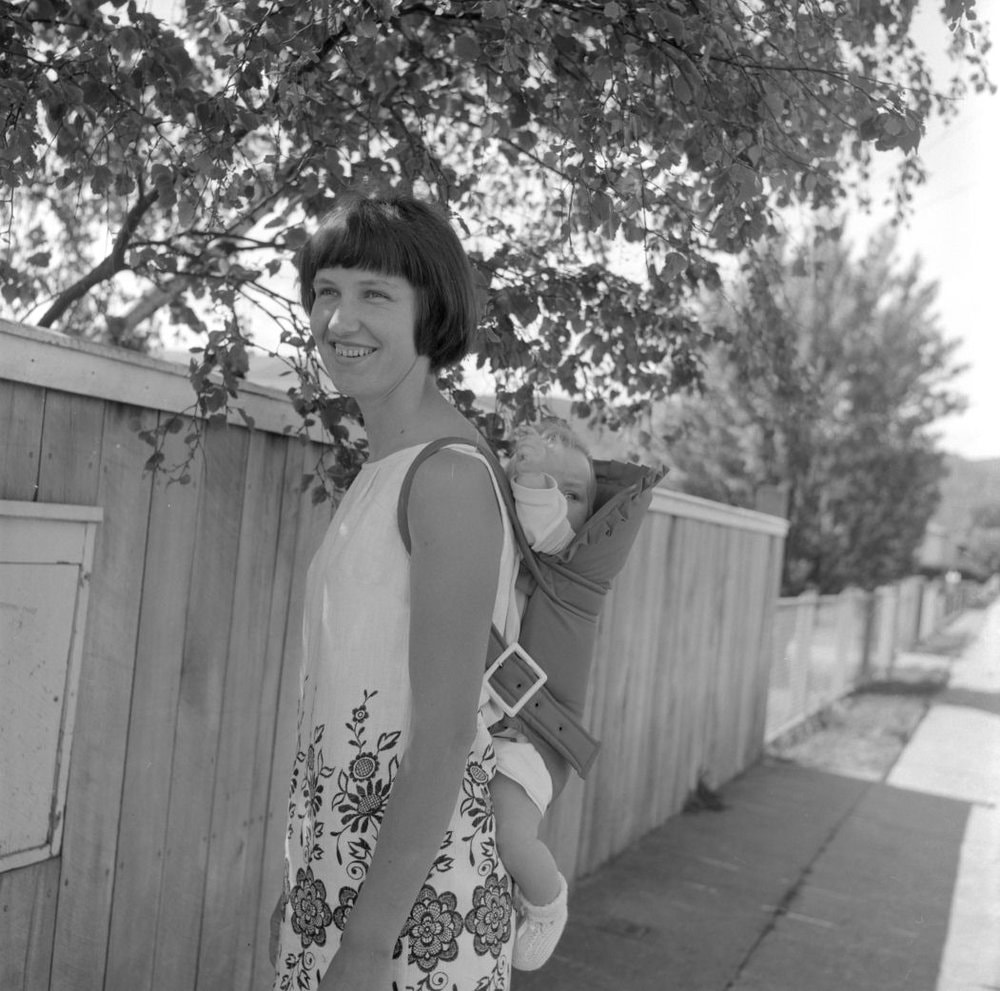
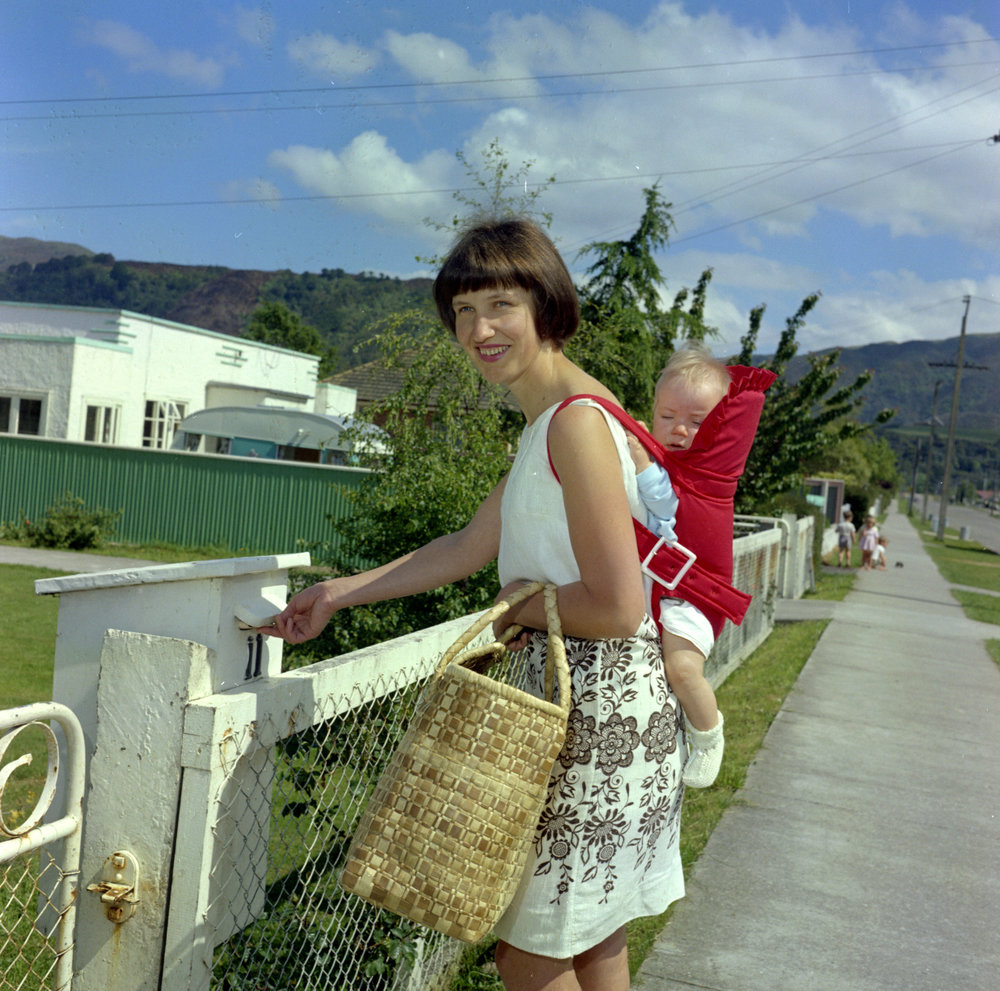
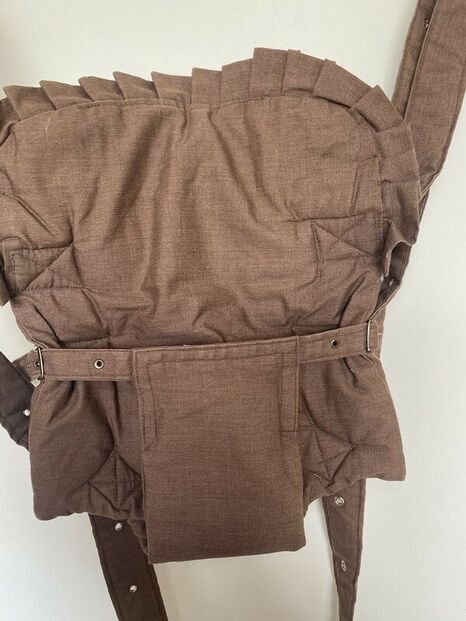
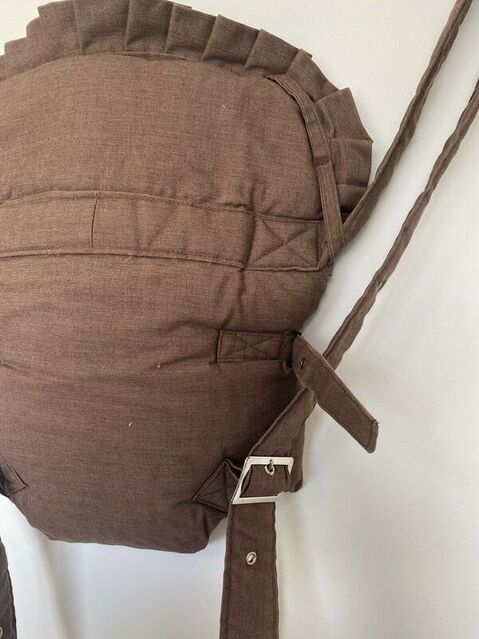
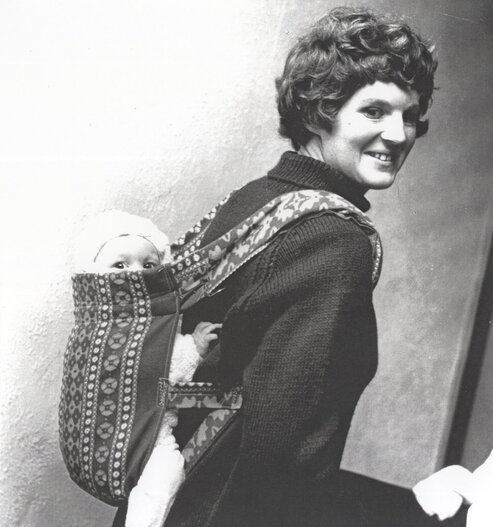
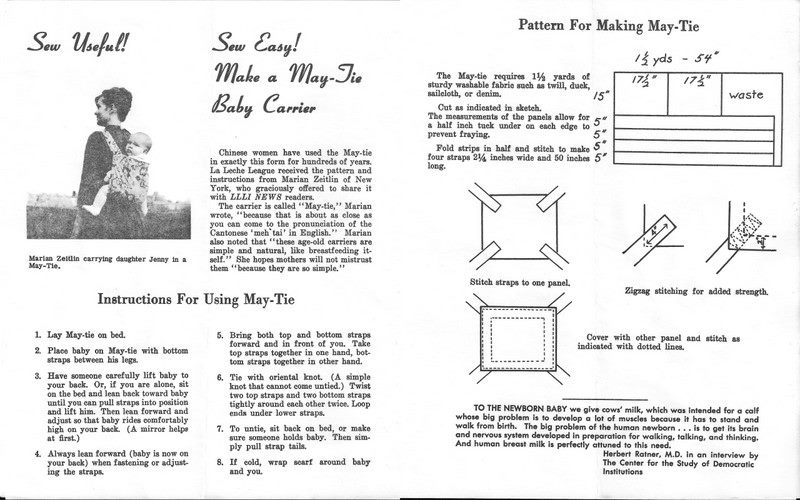
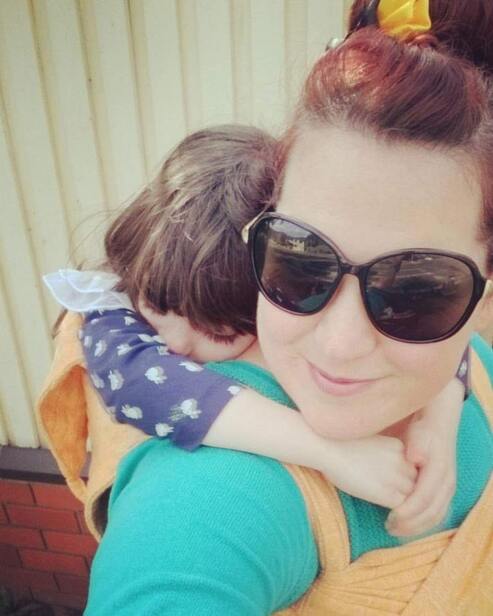
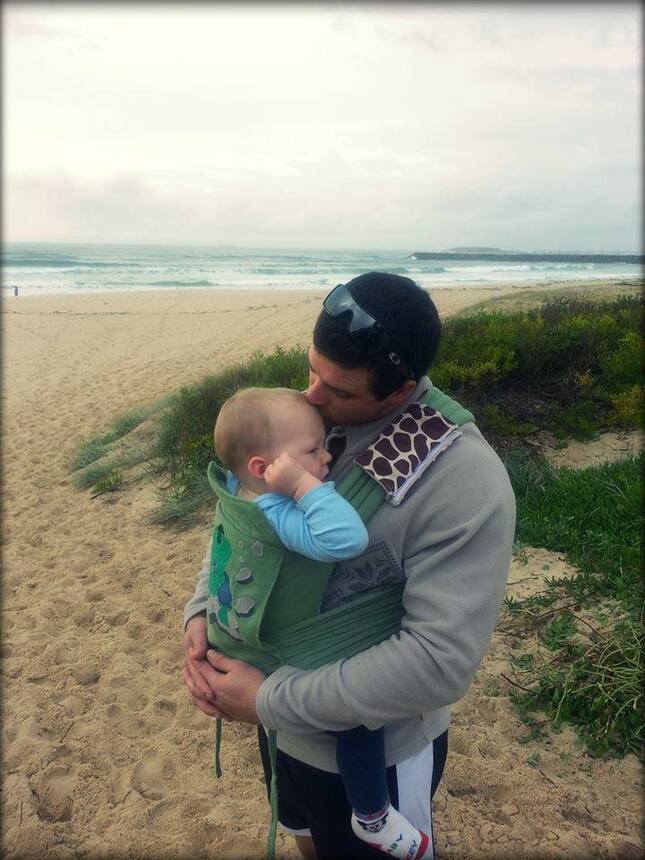
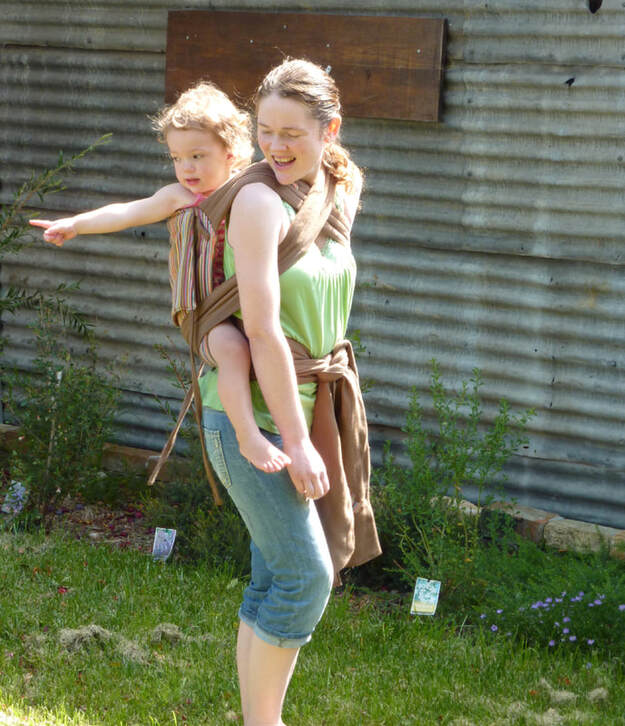
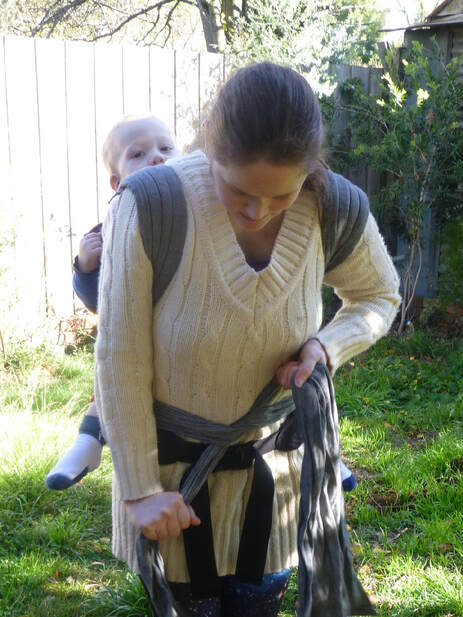
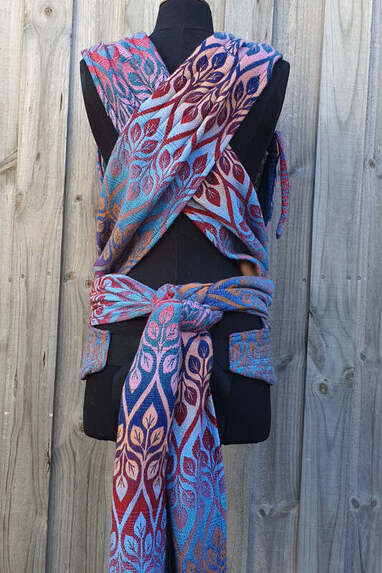
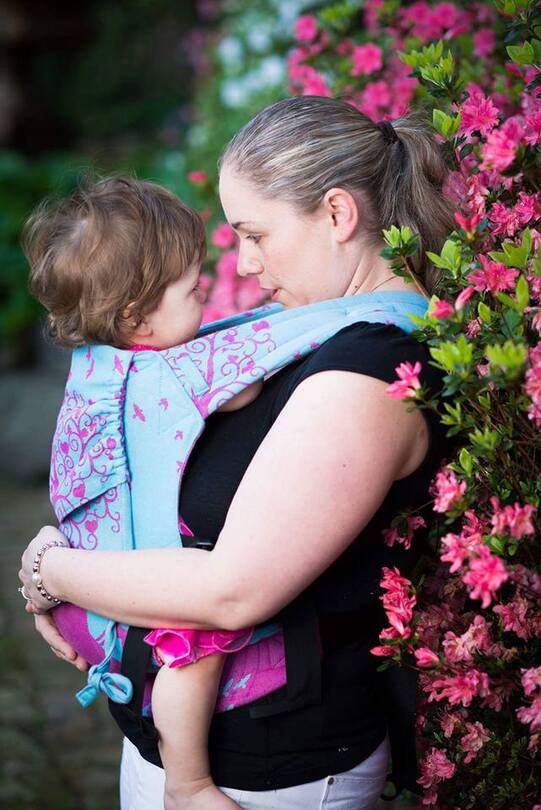

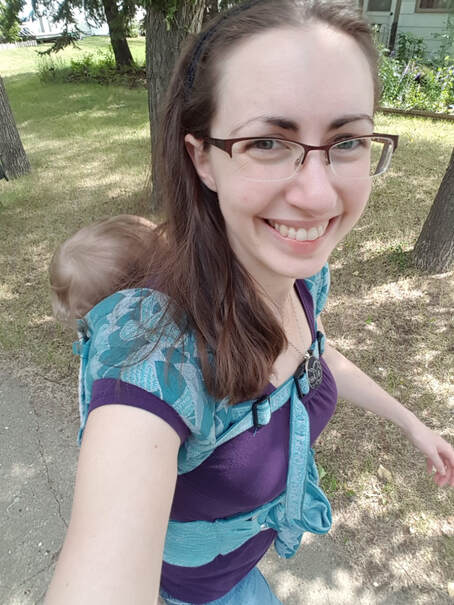
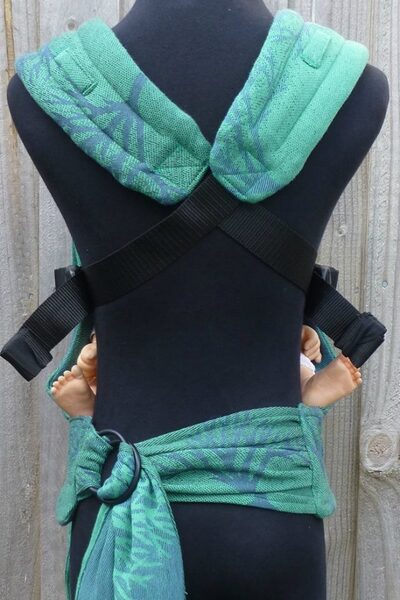
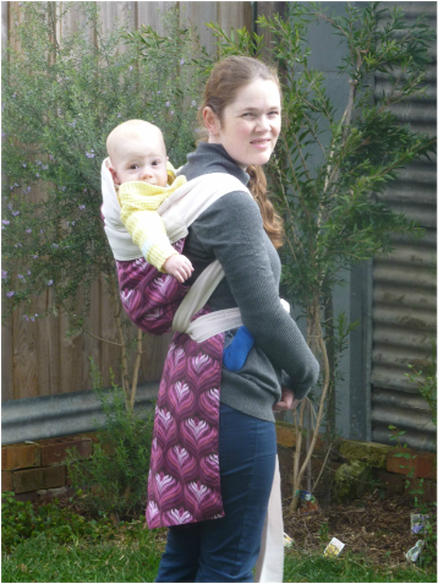
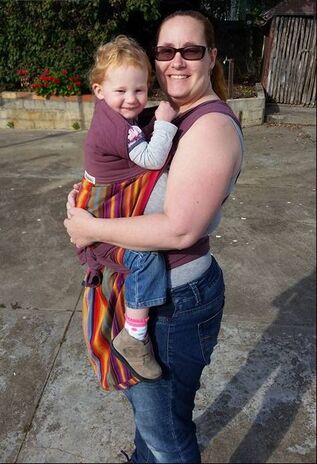


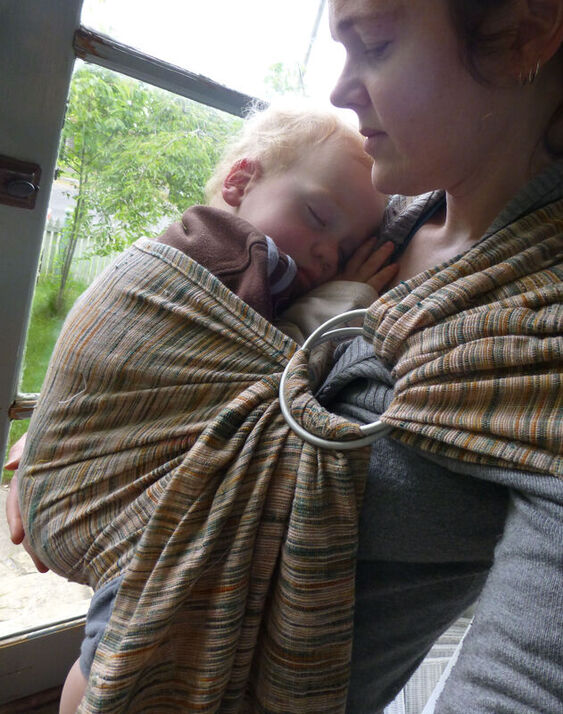
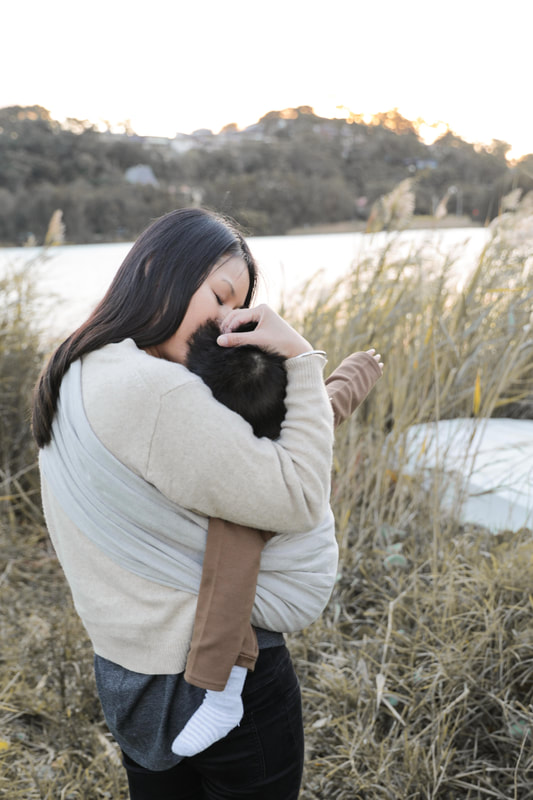
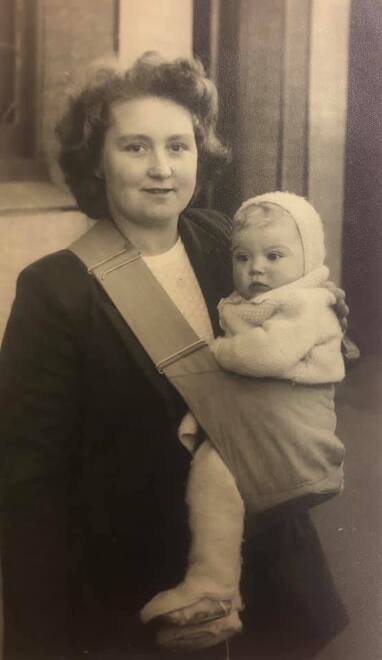
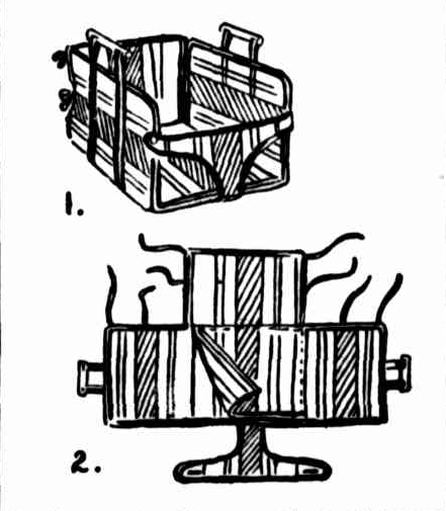

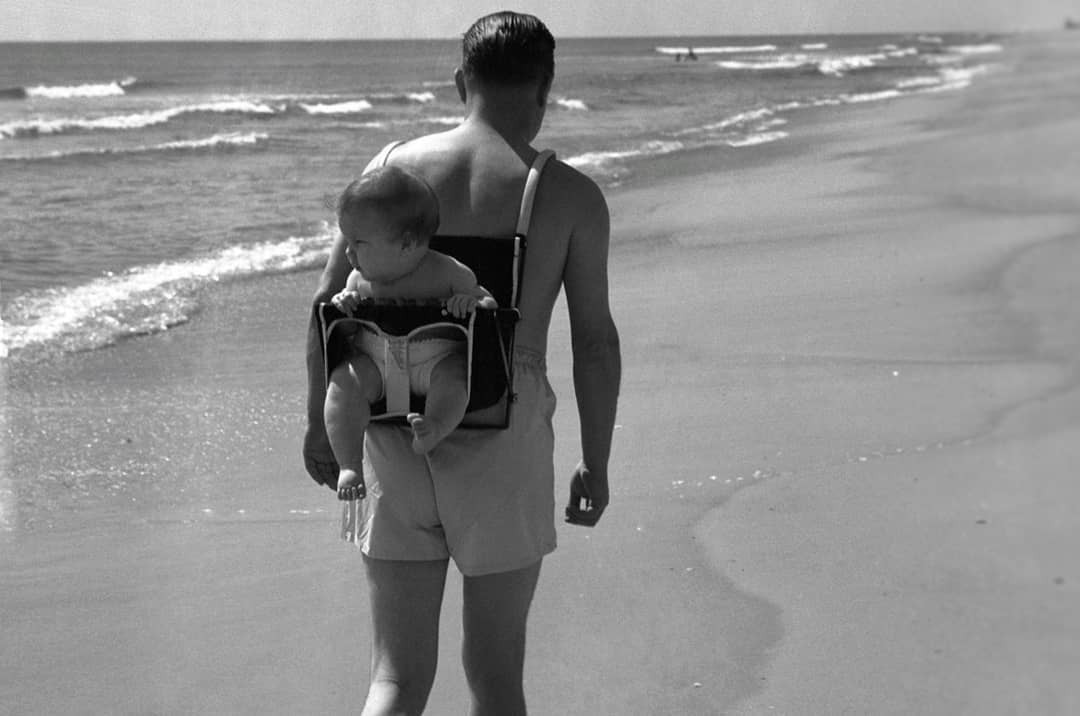
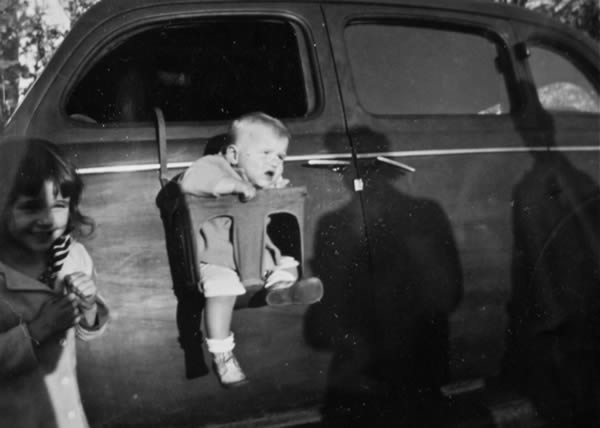
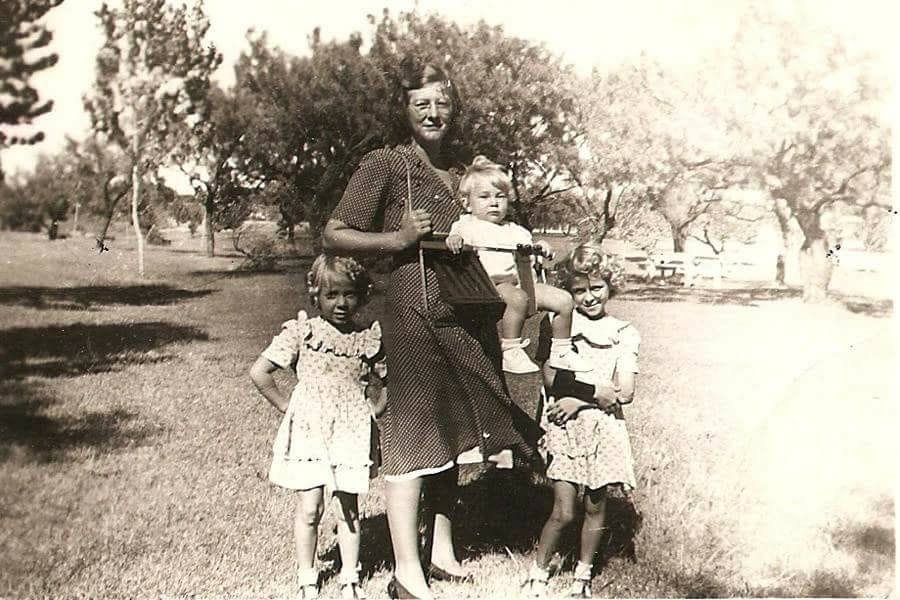
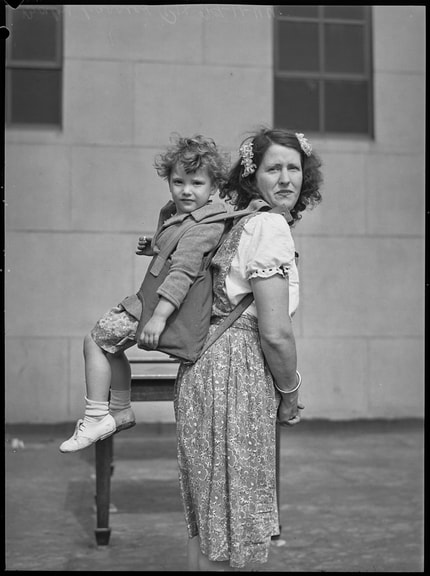

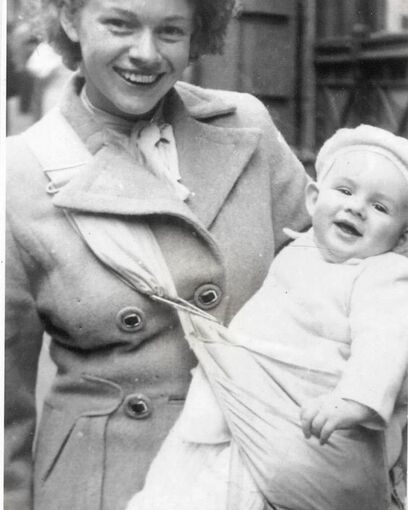
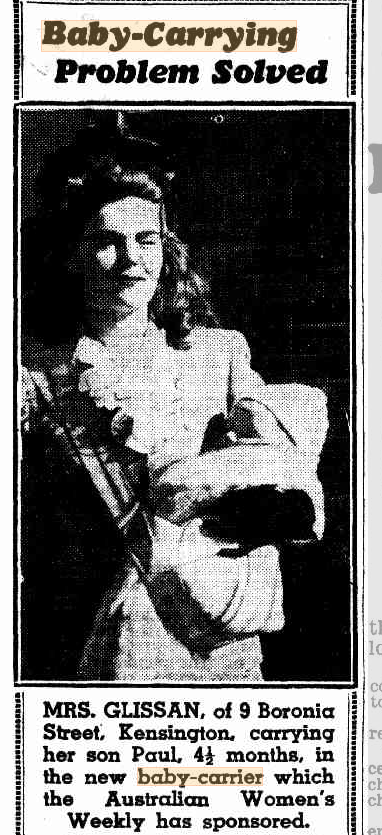
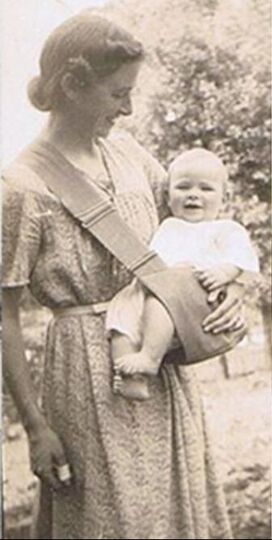
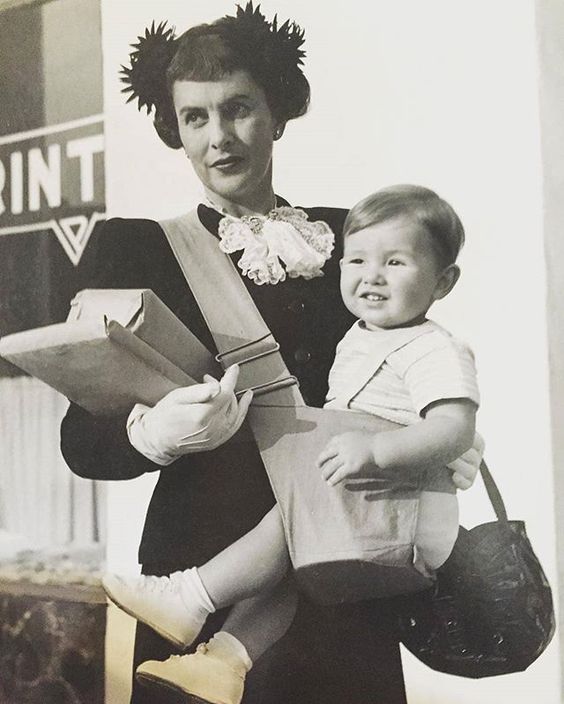

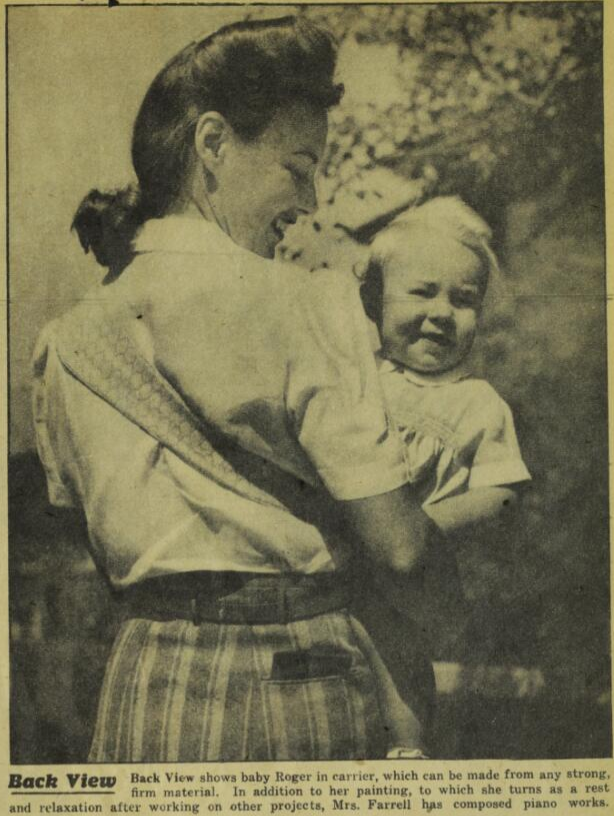
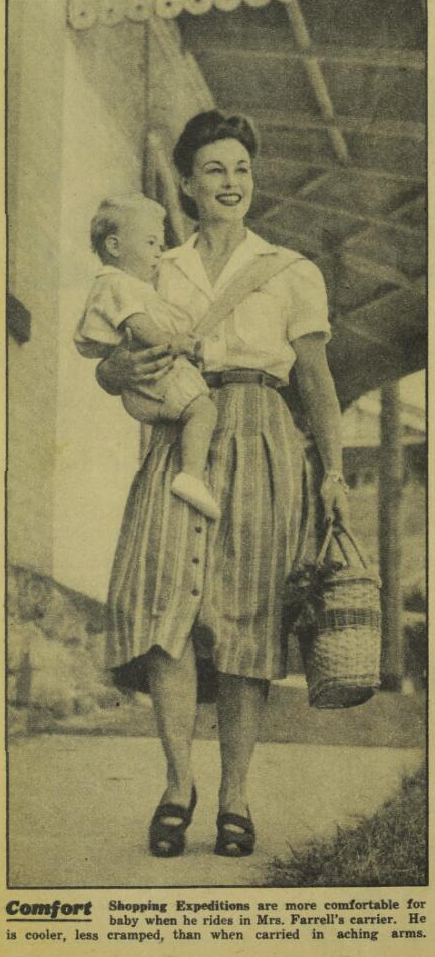
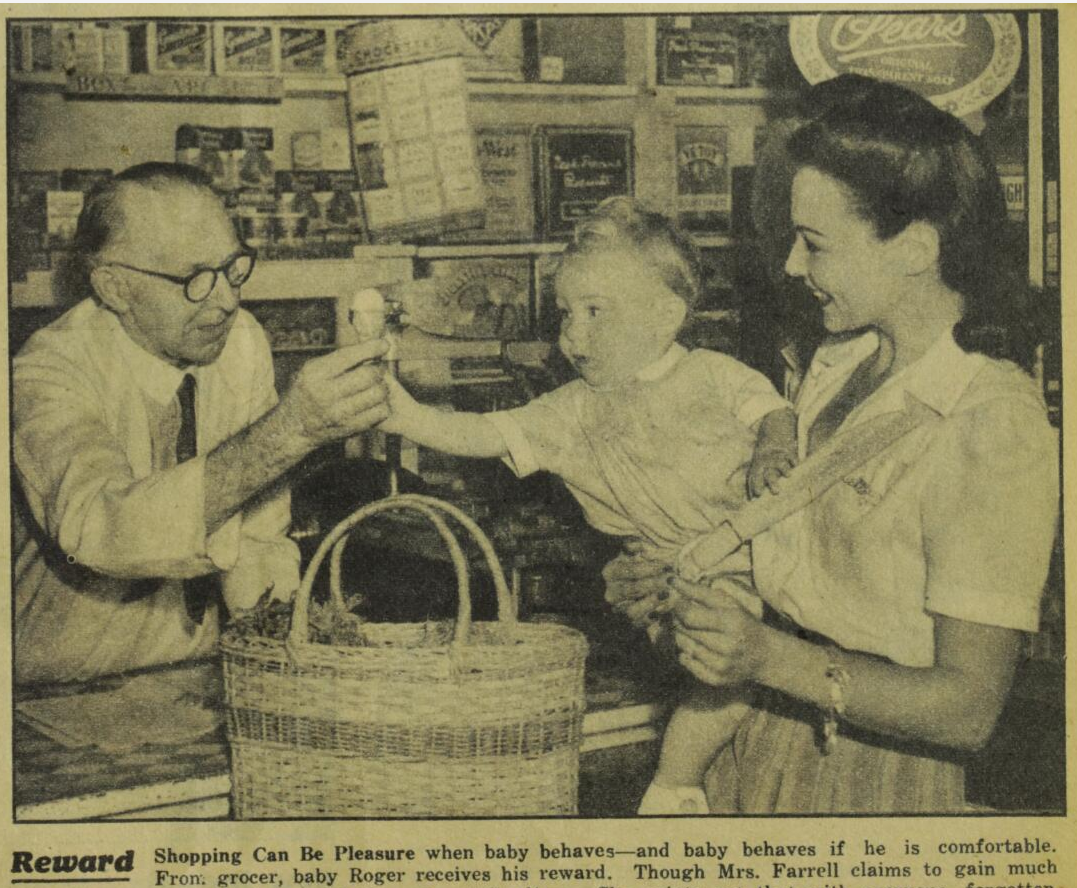
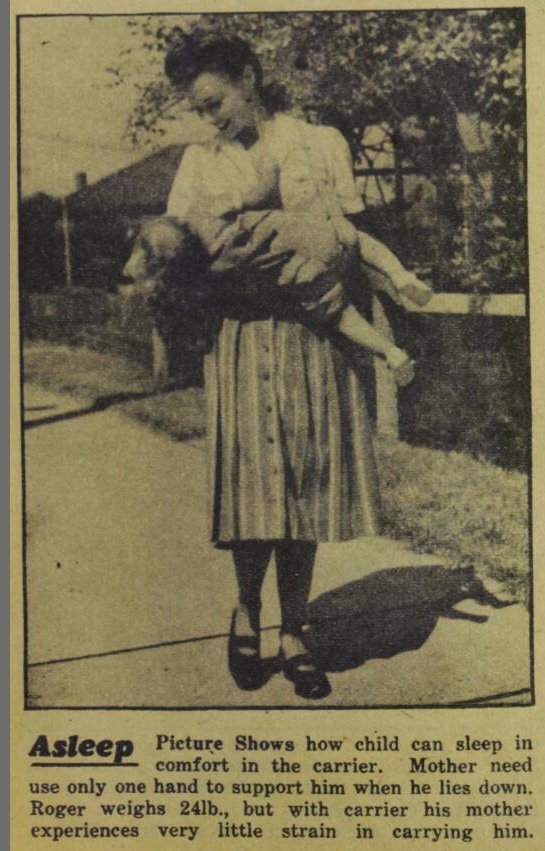
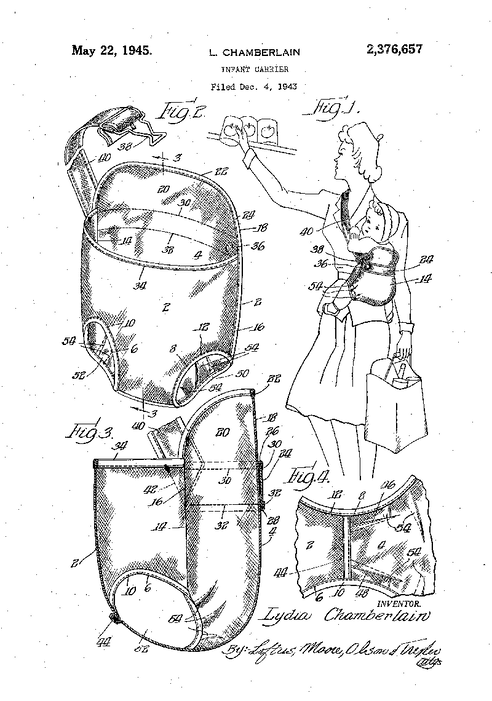
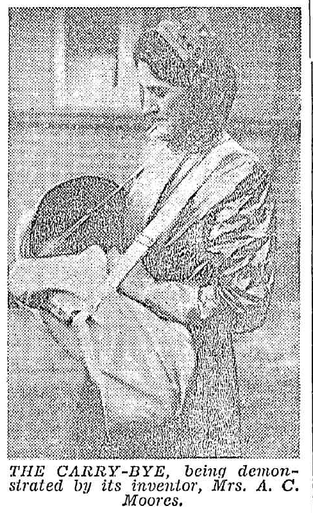
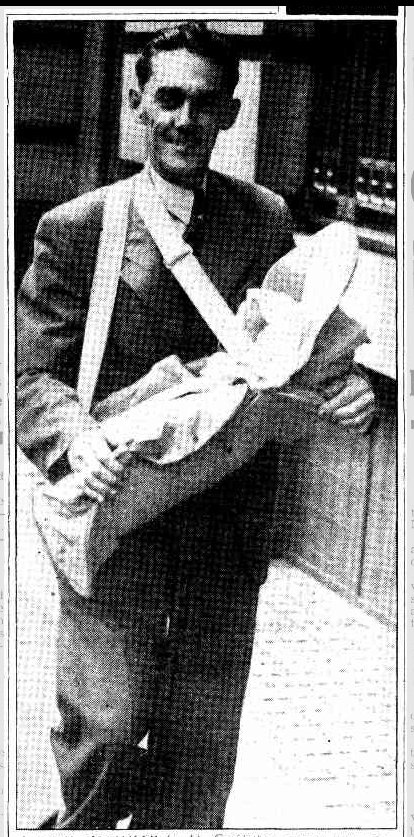
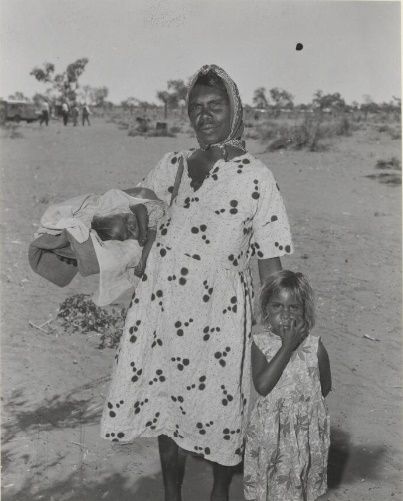
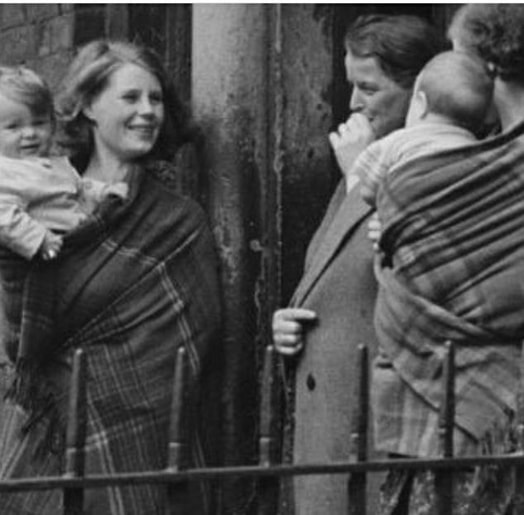
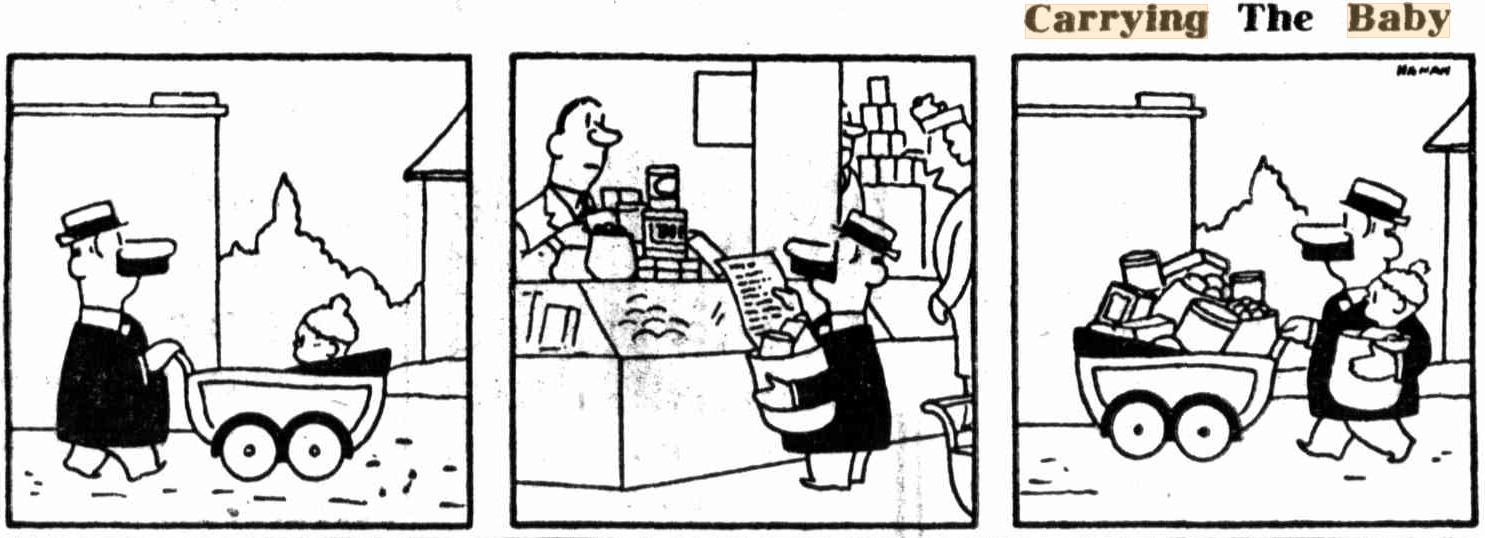
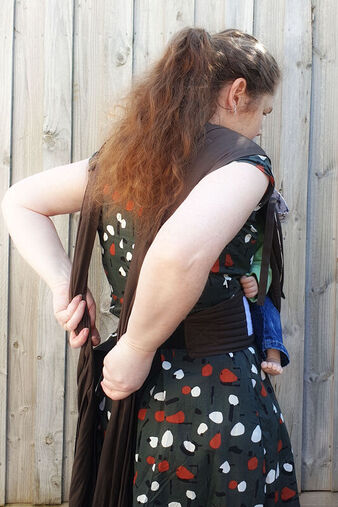
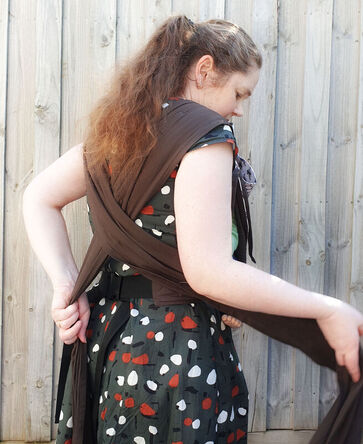
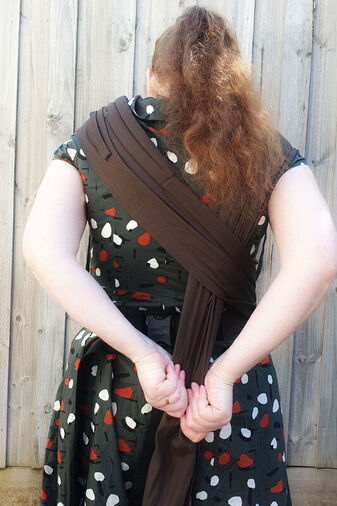
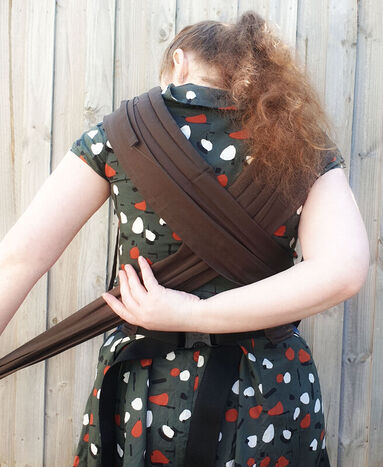
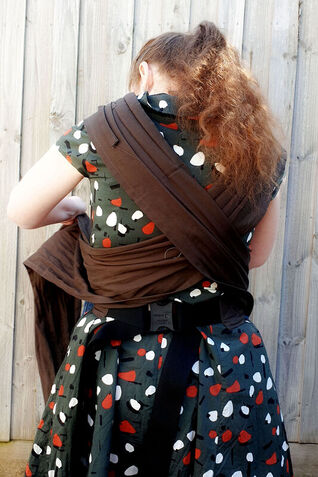
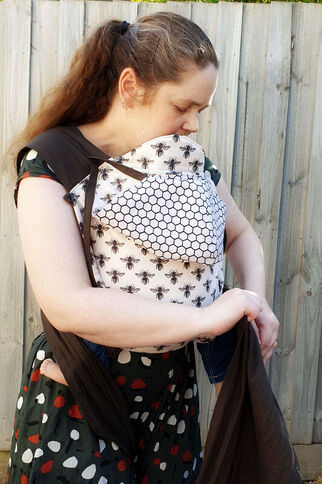
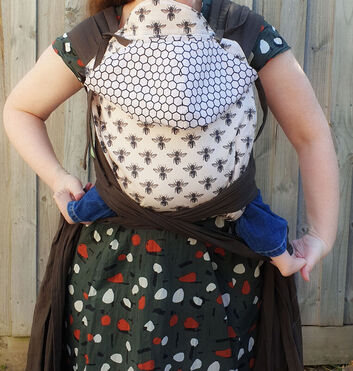
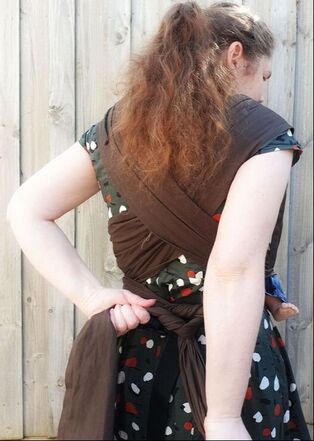
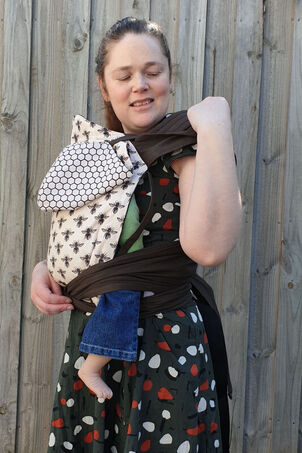
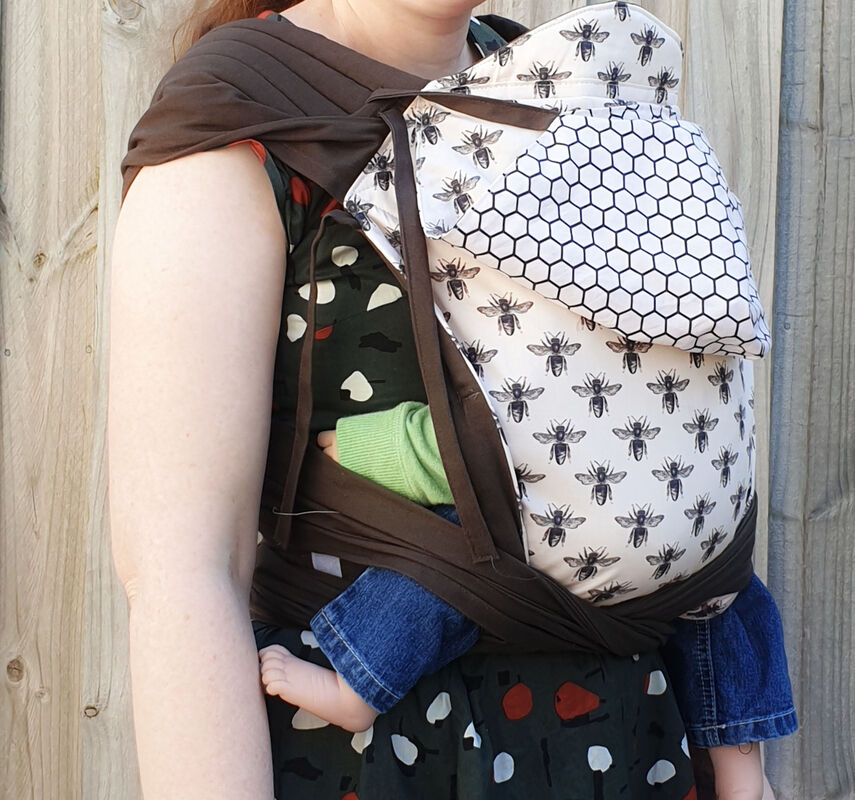


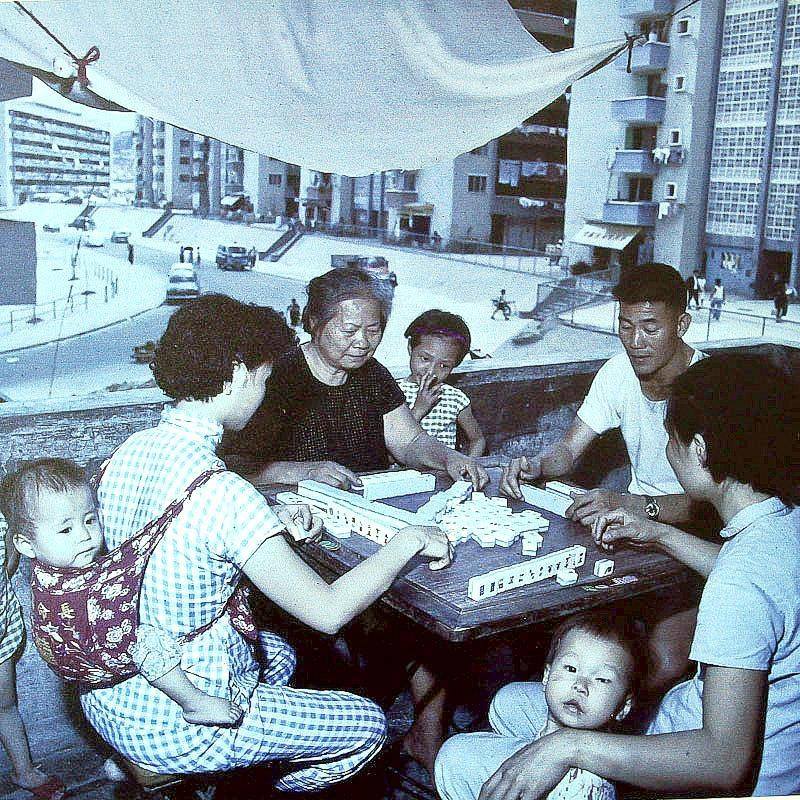
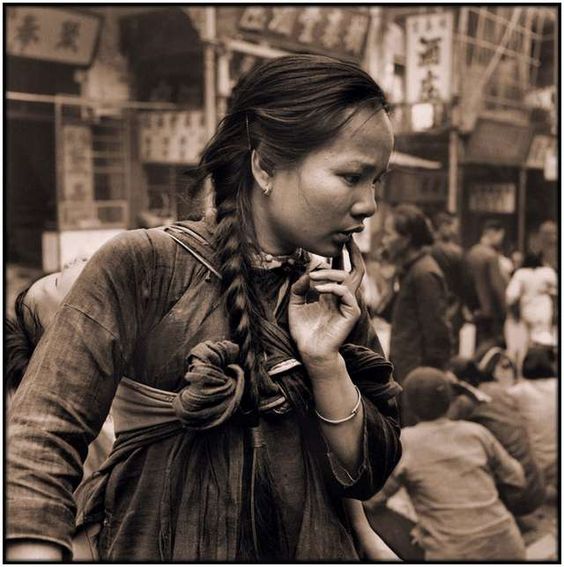
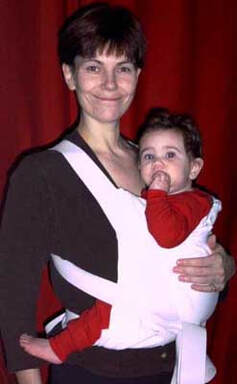
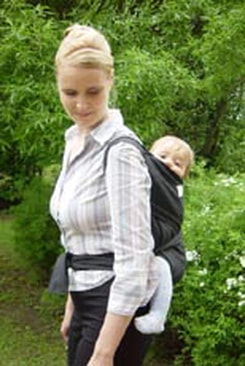
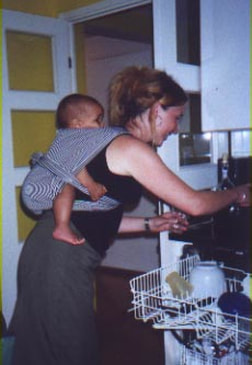
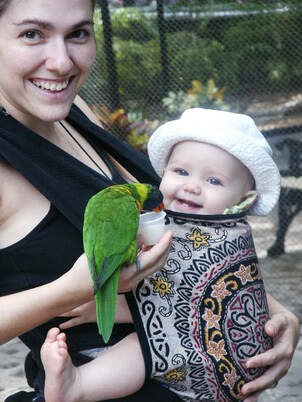
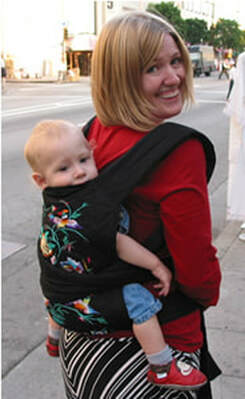
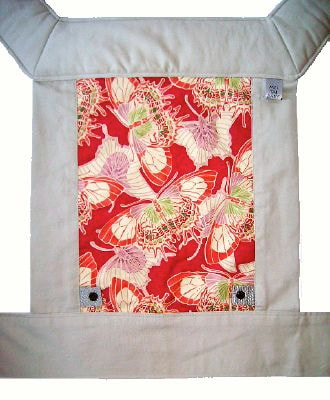
 RSS Feed
RSS Feed